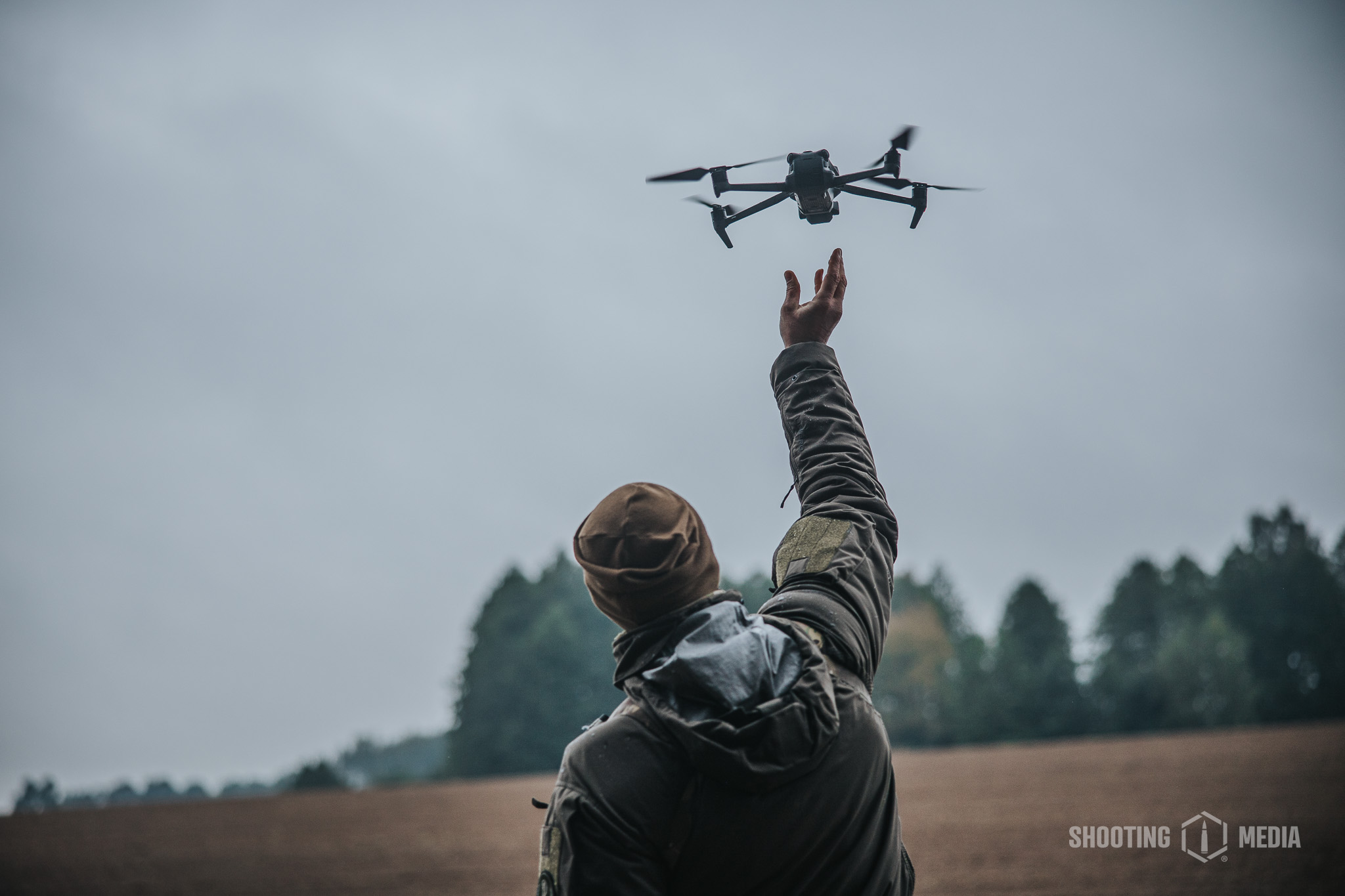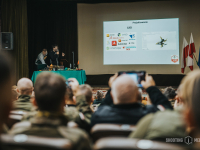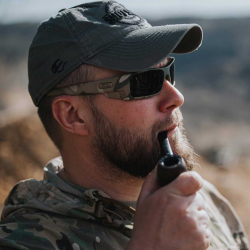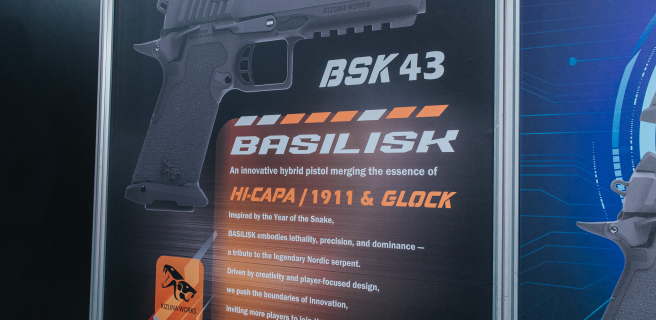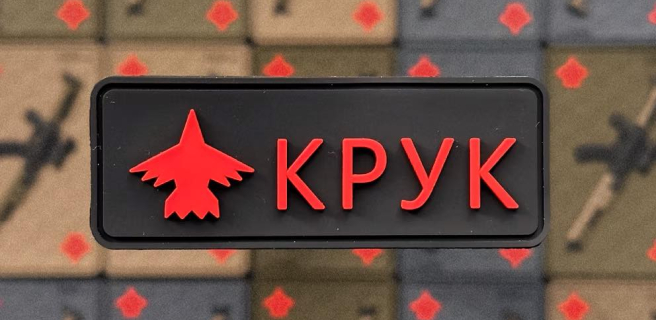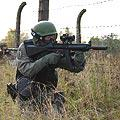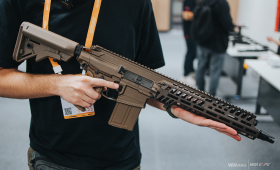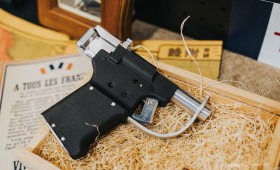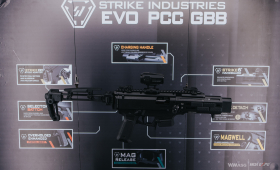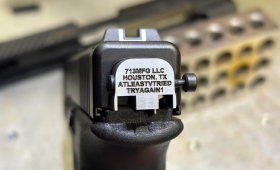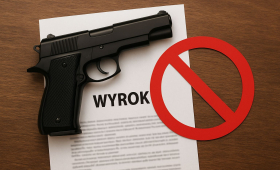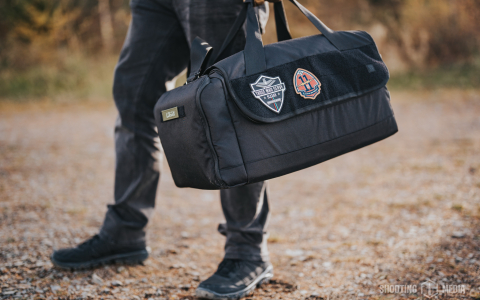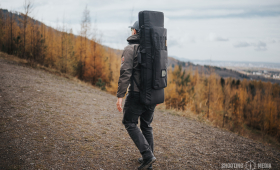Before we begin: at the request of the participants, apart from for certain exceptions, faces and names will remain known only by the participants of the camp.
From October 3rd to 5th, a conference dedicated to drones and their use in combat conditions was held at the Fortress of Osowiec, located on the grounds of the JW4226 military unit near Białystok. This is a grassroots, pro-defense initiative aimed at raising participants' awareness and enabling them to exchange knowledge, including experiences from actual combat operations in Ukraine. The speakers were not only civilians who combine their passion for drones with a pro-defense mission and soldiers of the Territorial Defense Forces (WOT), but also two drone operators from the active service of the Ukrainian army, who joined via teleconference.
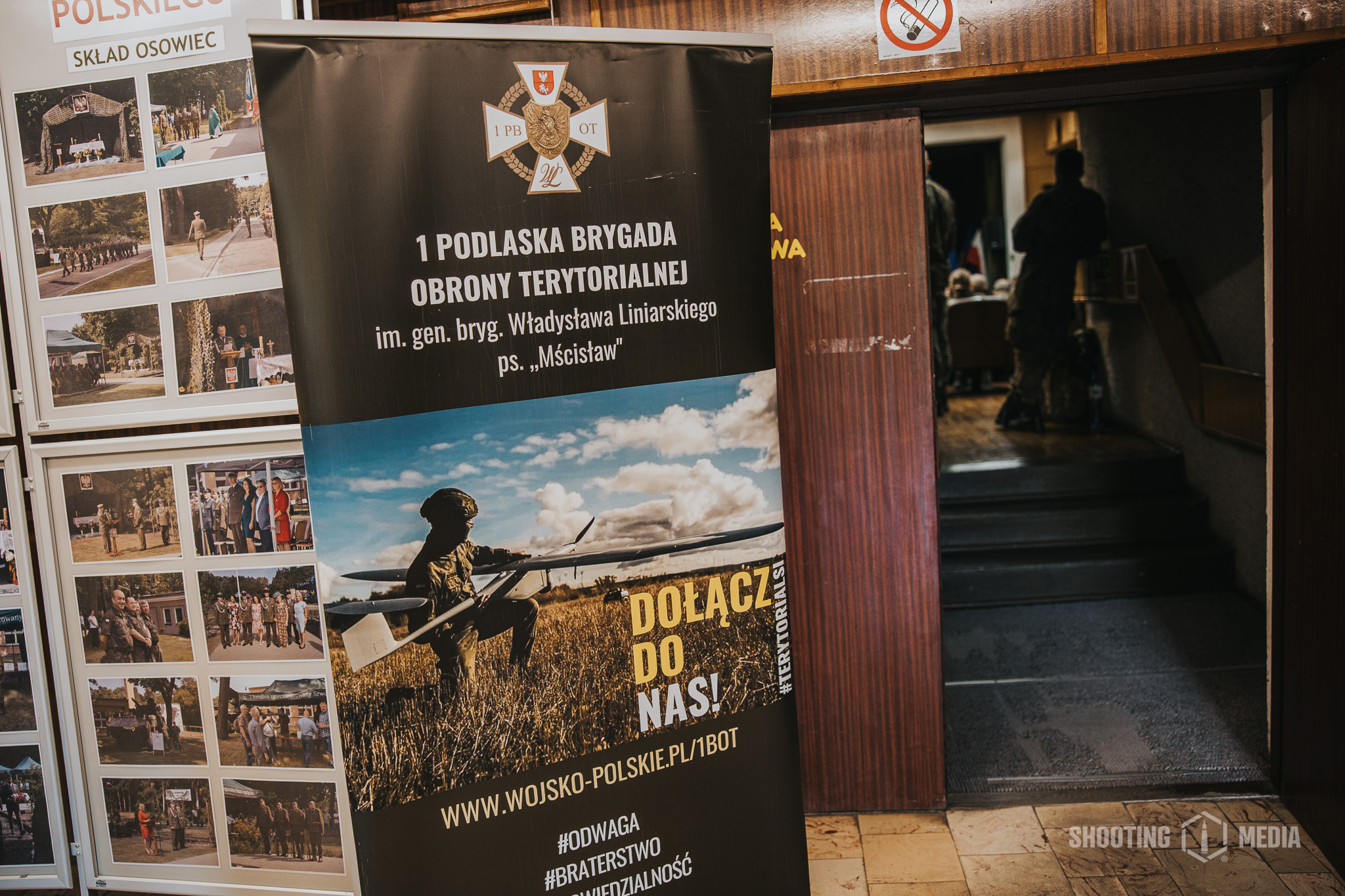
The audience mainly consisted of soldiers, officers of the Polish Army, with a large representation from the WOT, as well as civilians, who during breaks shared their passion for drones, observations, and conclusions with the soldiers. During the very tight conference schedule, 11 lectures were delivered in 60-minute panels starting at 8 a.m. on Saturday, addressing a range of topics related to working with drones in combat conditions.
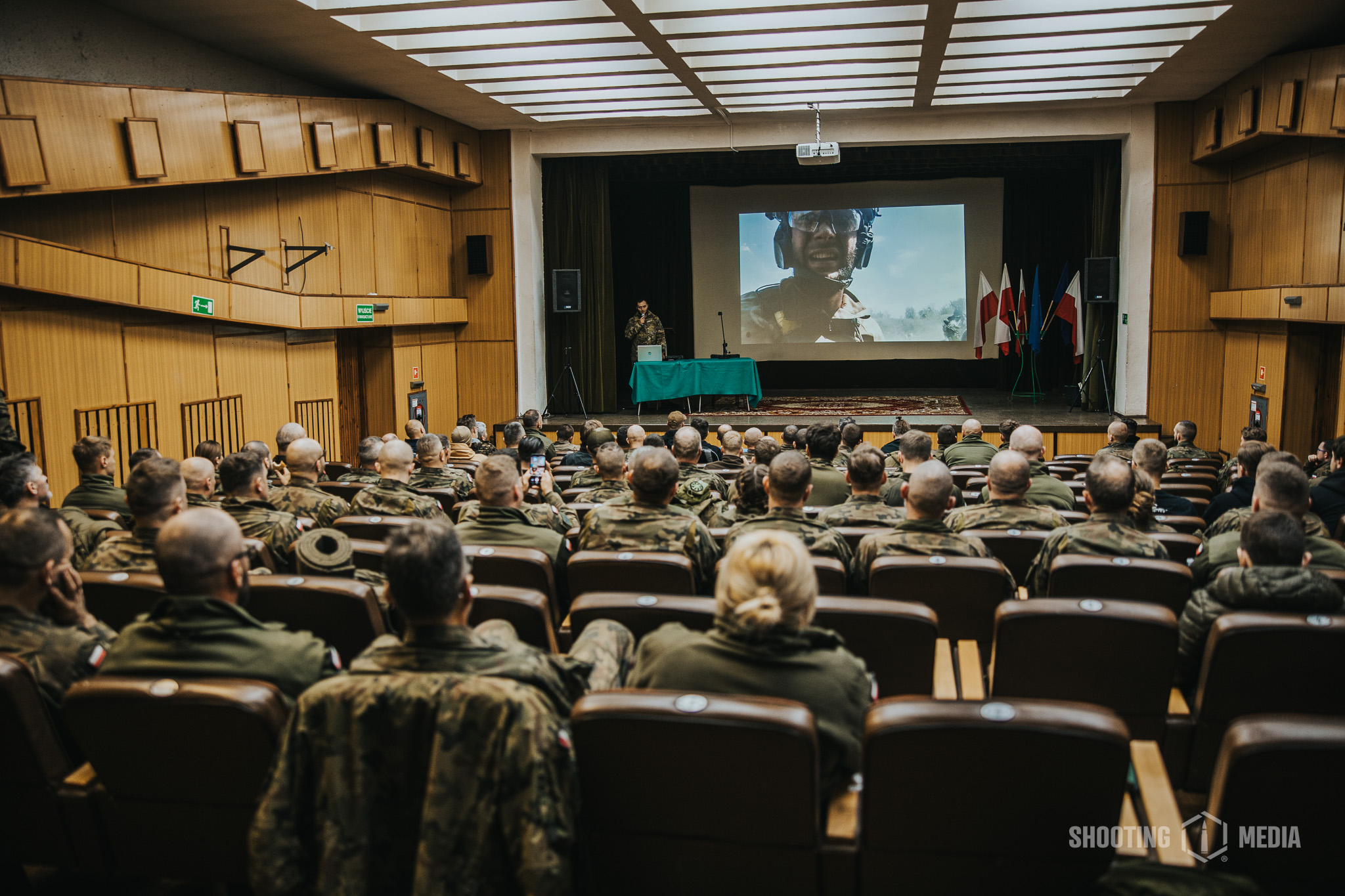
One of the first lectures was delivered by two brothers (names will not be published) who shared their proposal for a reconnaissance drone-plane designed to survive any hard landing, a challenge often faced by aircraft. They constructed it from scratch in their free time.
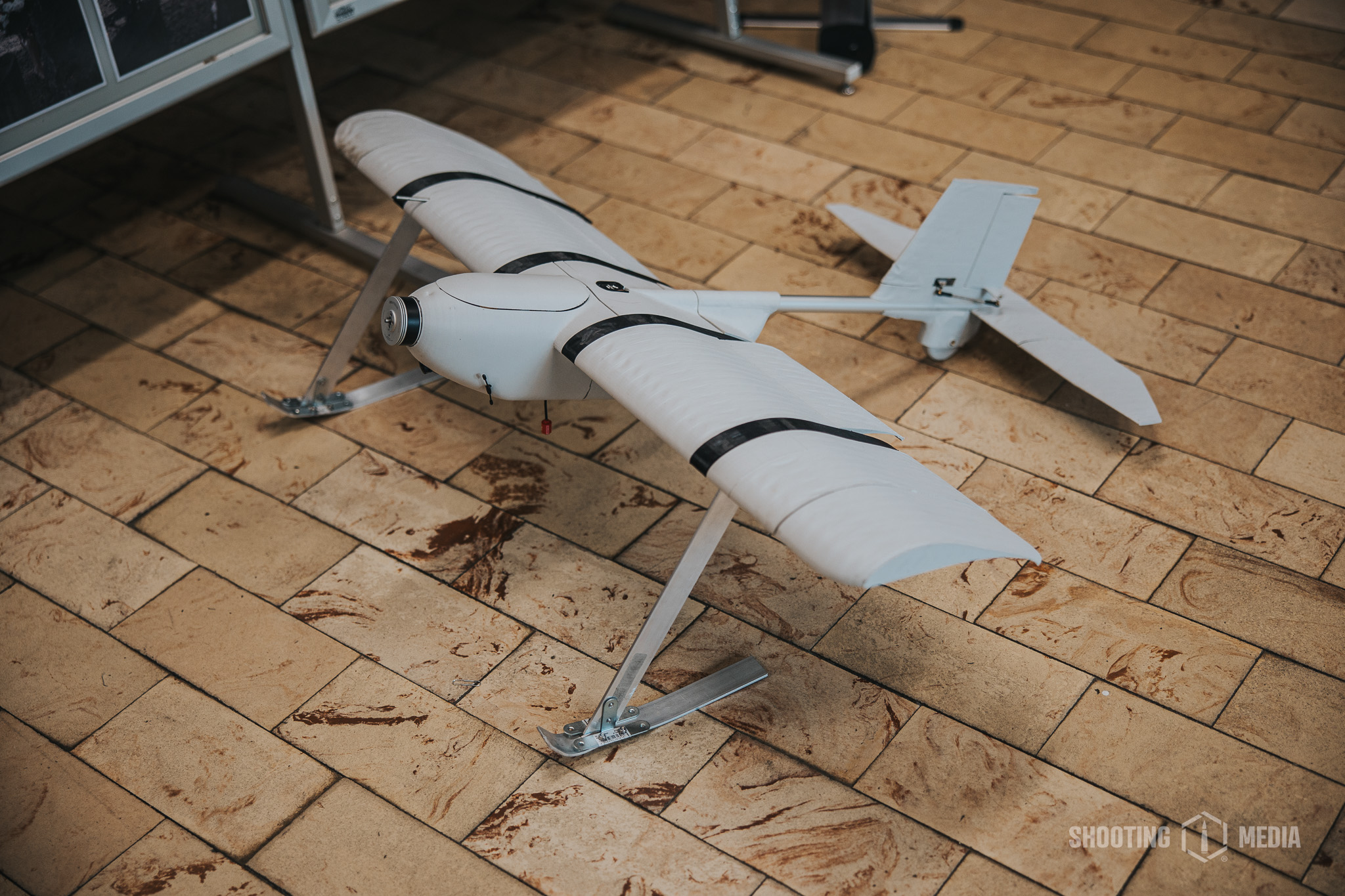
An intriguing lecture was presented by Matej, a paramedic, who discussed his experiences and conclusions from battlefield medicine, verified by the realities of the war in Ukraine. Starting with organizing aid, he went through an artillery combat post, and ended his career saving the lives of wounded Ukrainian soldiers by evacuating them from the combat zone. He highlighted the importance of a systematic medical hierarchy for casualties, from medics at the company or platoon level, through the Battalion Medical Point, Brigade Evacuation Point, Stabilization Point, Frontline Hospital, and finally hospitals in the rear. This ensures optimal use of resources, both personnel and equipment, depending on the risk zone, and the various levels of medical care increase the chance of survival or even saving a wounded soldier’s limb (e.g., a tourniquet left on for too long and no competent person to check it in time). Participants learned examples of different situations Matej had faced, as well as the threats medics face in this kind of war, where the enemy shoots at everyone. In this case, vehicles and their proper security, including regular preventive service, are key. Matej also emphasized, which is often overlooked, that a soldier's exclusion from combat is not only due to physical injuries causing severe bleeding but also acoustic and pressure injuries (barotrauma) resulting from being close to artillery fire, not to mention psychological trauma.
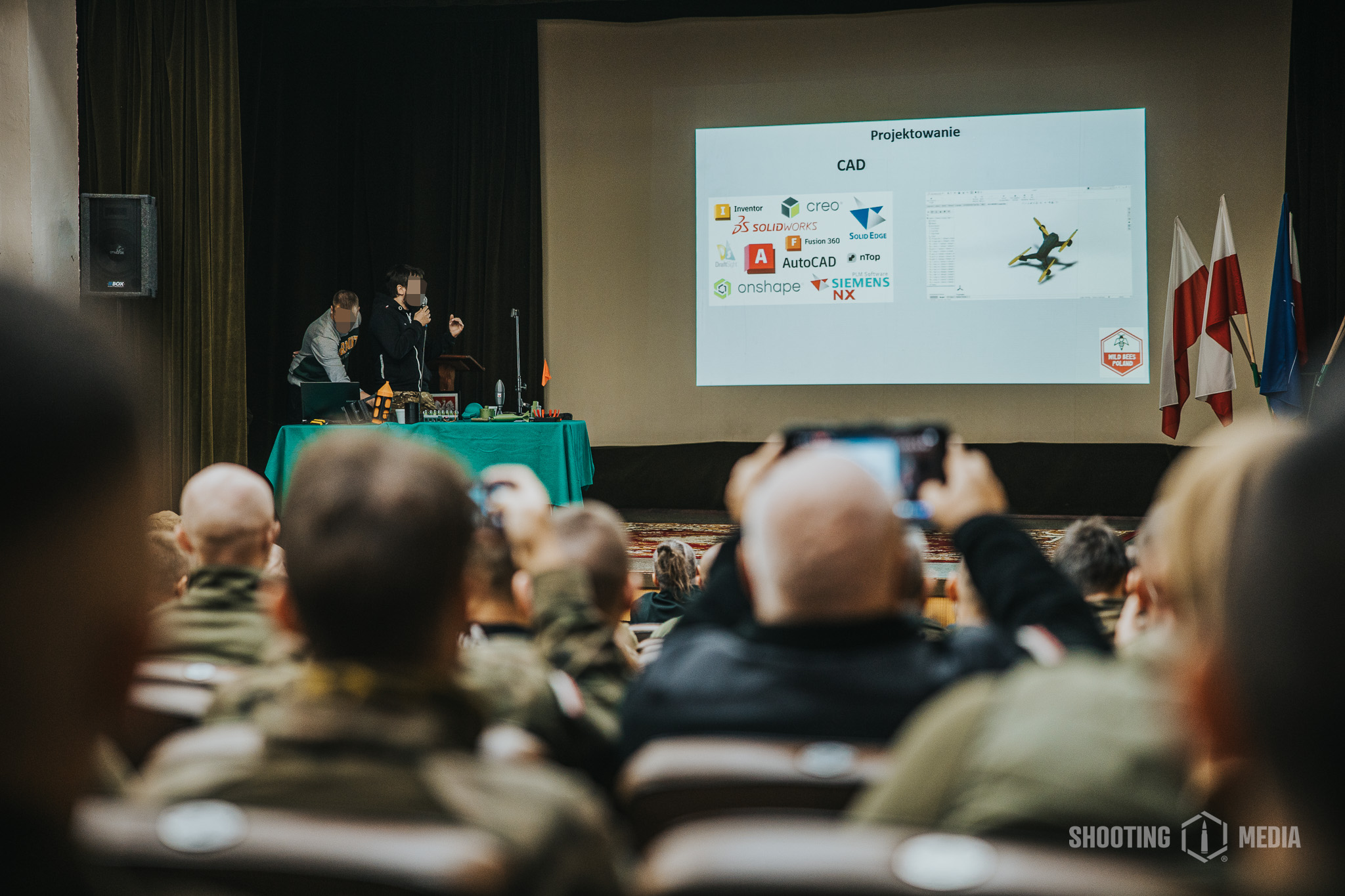
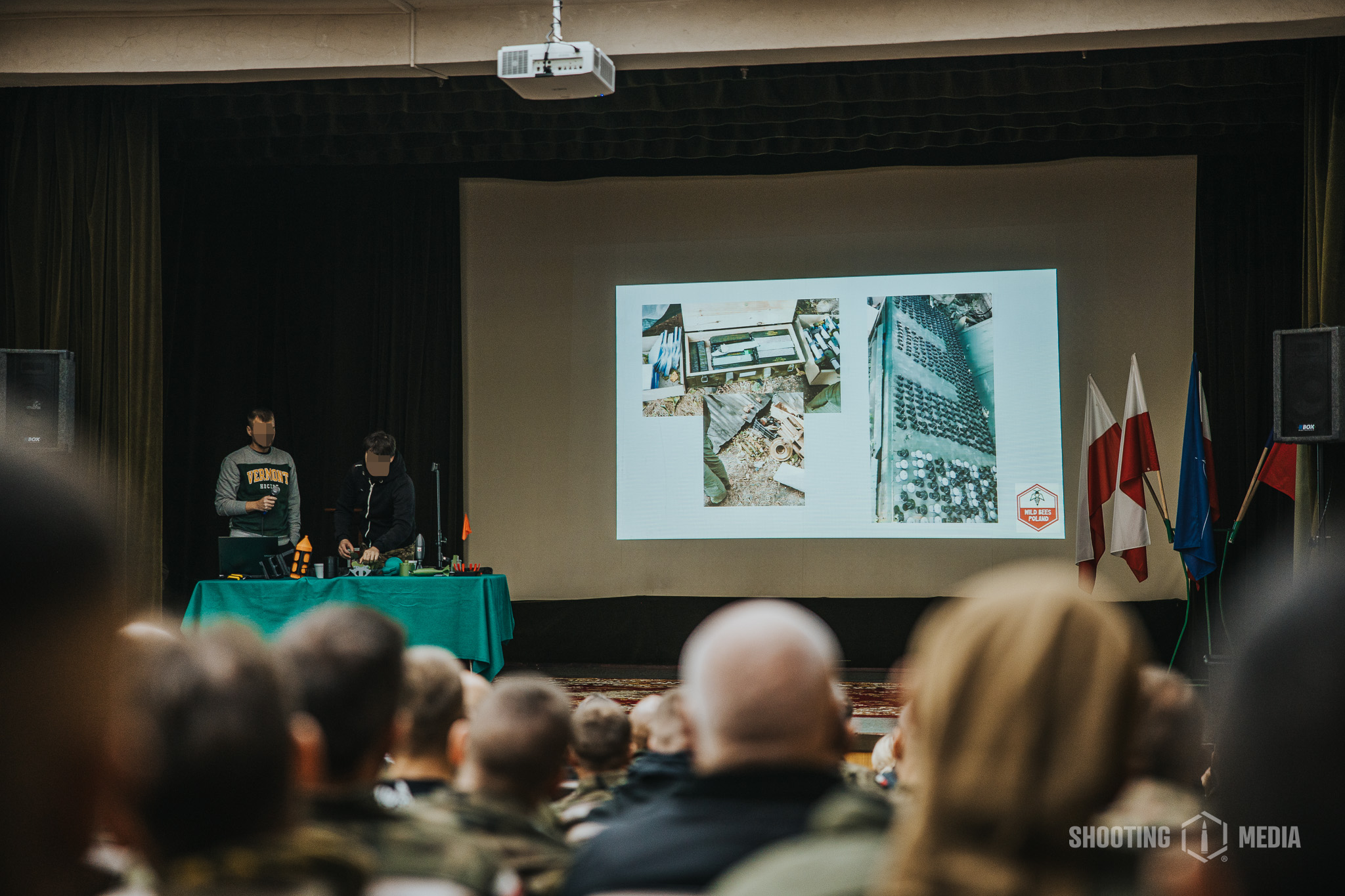
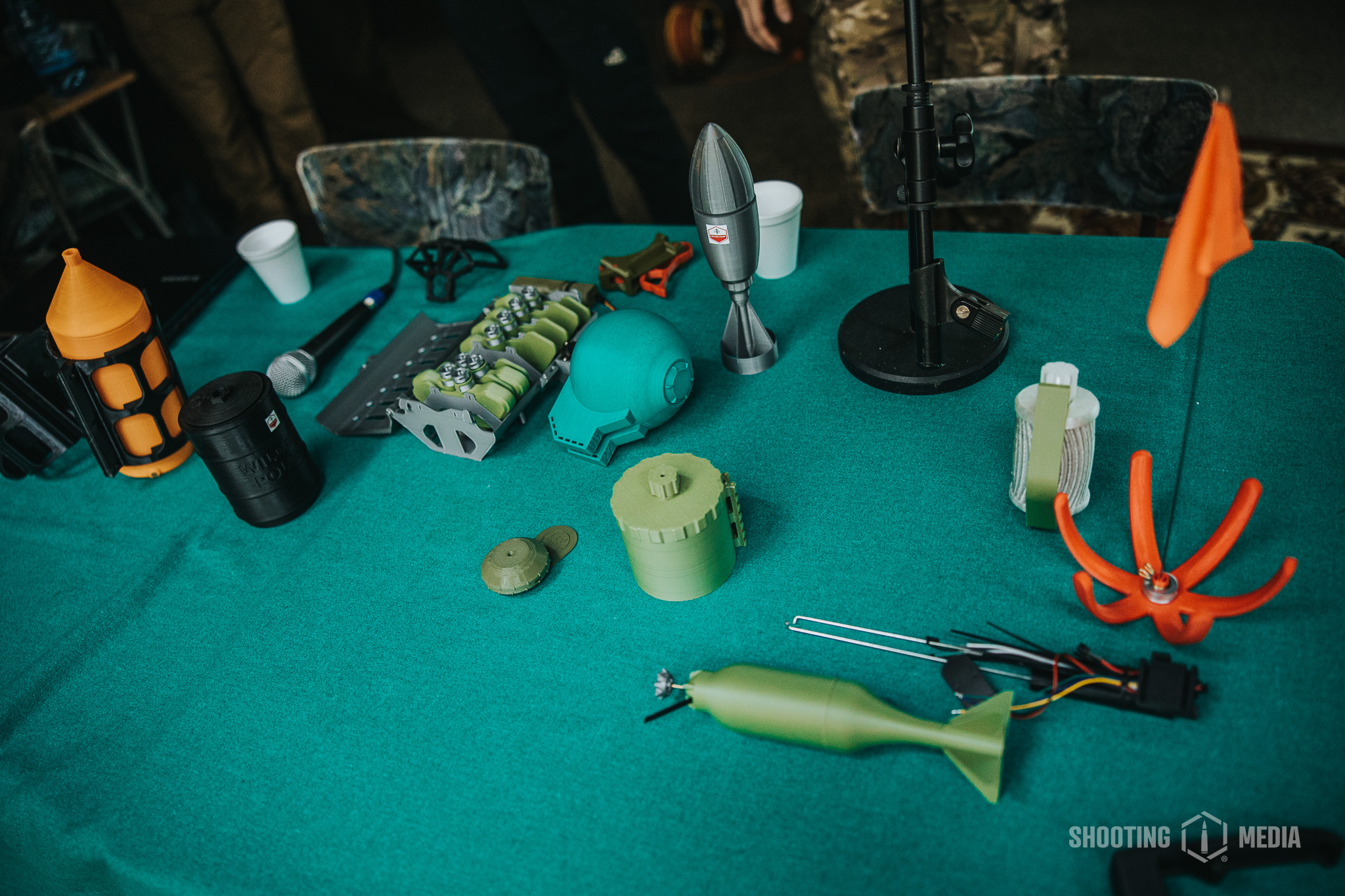
The versatile and widespread use of 3D printing, even in frontline conditions, was presented by Emanuel and Jeremi from the Wild Bees group, who have been supporting Ukrainian defenders since the beginning of the war with their production. 3D printing is a secondary player, but it plays a crucial role in this war. It is cheap, the production time is short, and it offers flexibility and rapid modifications of produced components, something that large arms manufacturers cannot achieve. 3D printing also allows for grassroots support from civilians. Hand grenades and bombs for drones are printed. These bombs can now penetrate up to 6 cm of steel. Additionally, systems for dropping and arming are printed from filament. Drones for interception, including flying wings, are also printed. Non-combat elements, such as a door handle for a Hummer (or a Star...), drone stands, periscopes, training models, drop markers for sapper training (a drone marks the position of a detected mine), or splints for stabilizing injured limbs and prosthetic covers are also produced.
There was also a lecture on detonators and IEDs, and Bartek aka "Prodrone" discussed antenna systems and drone communication control.
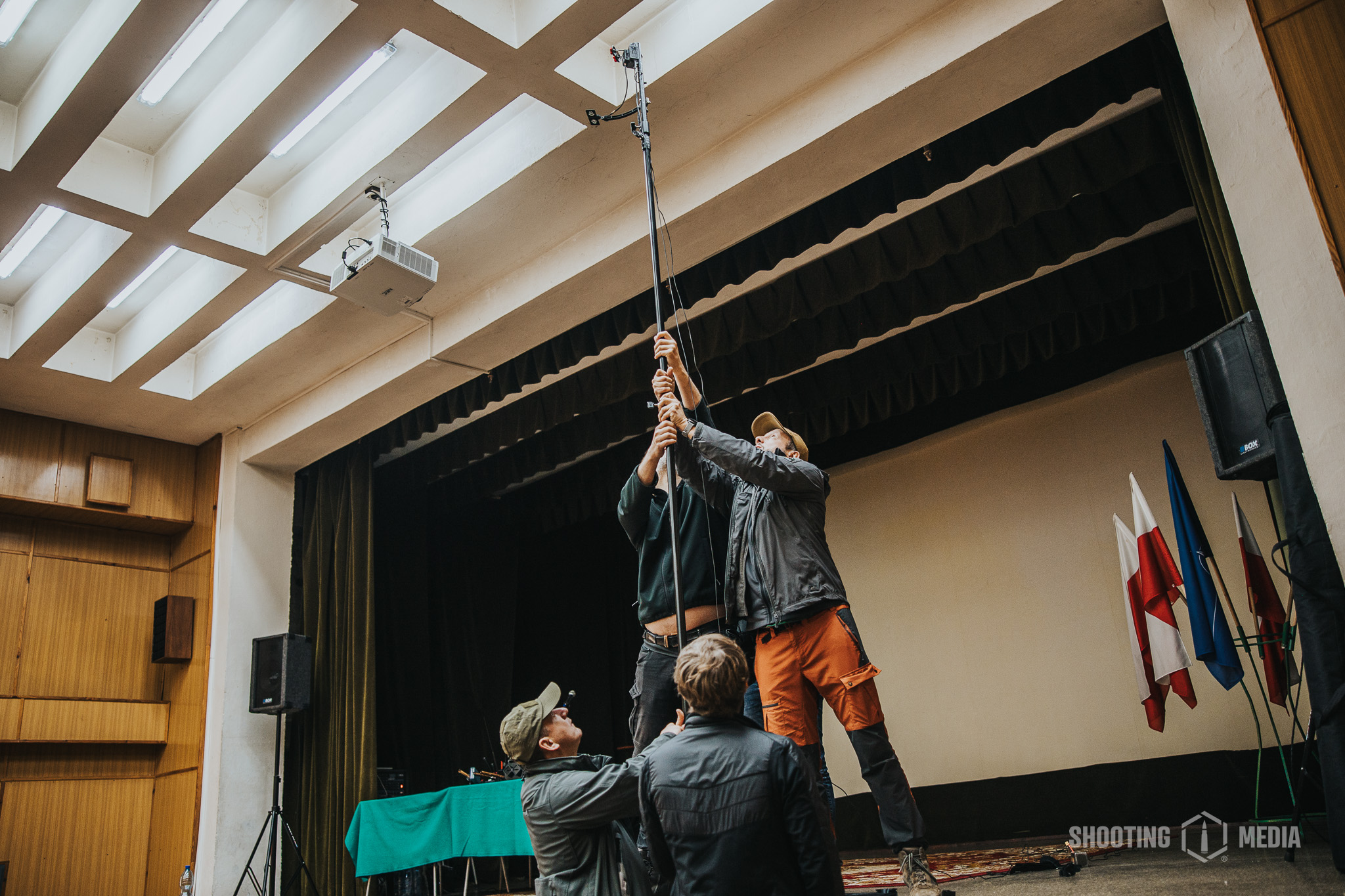
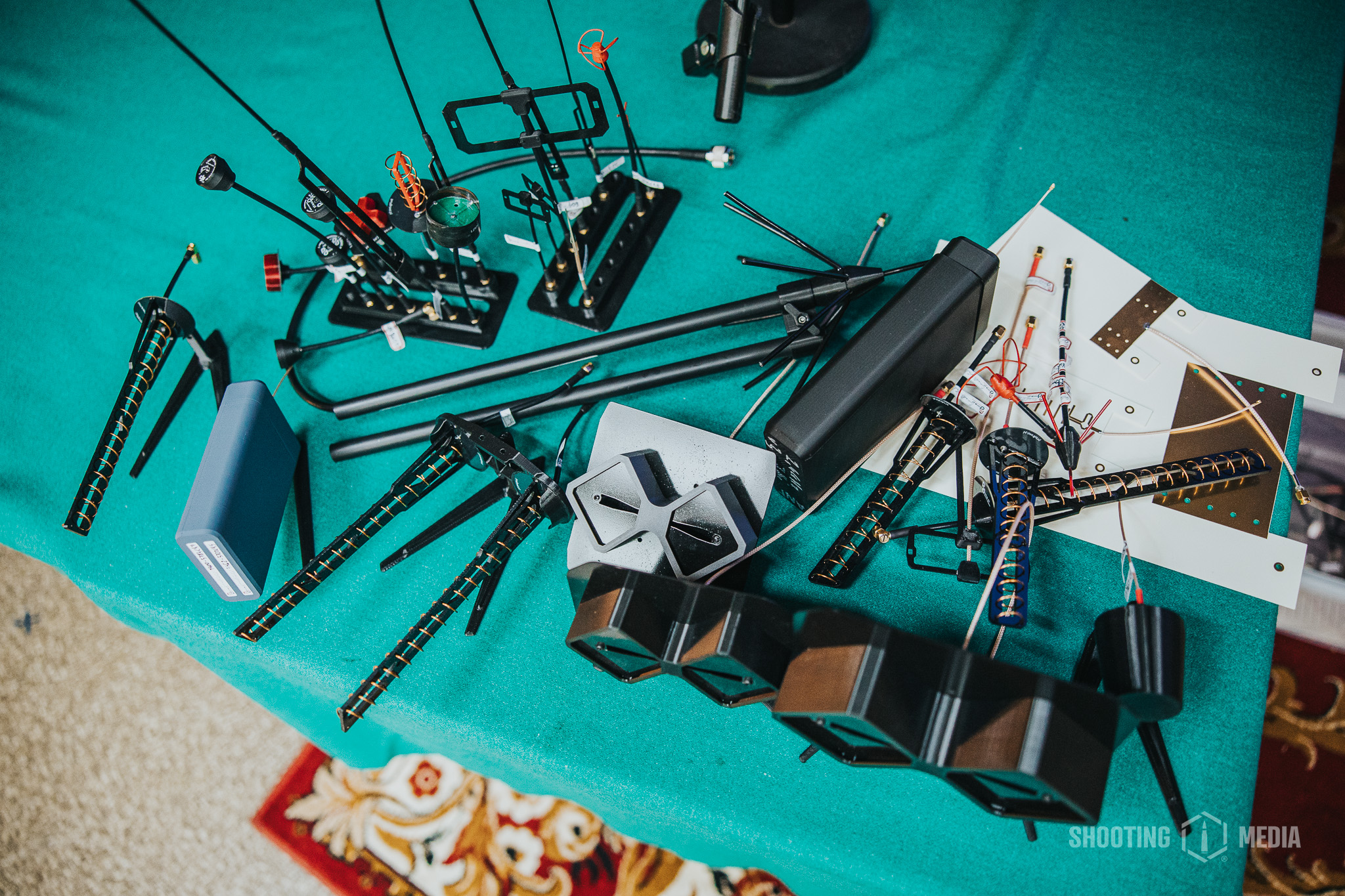
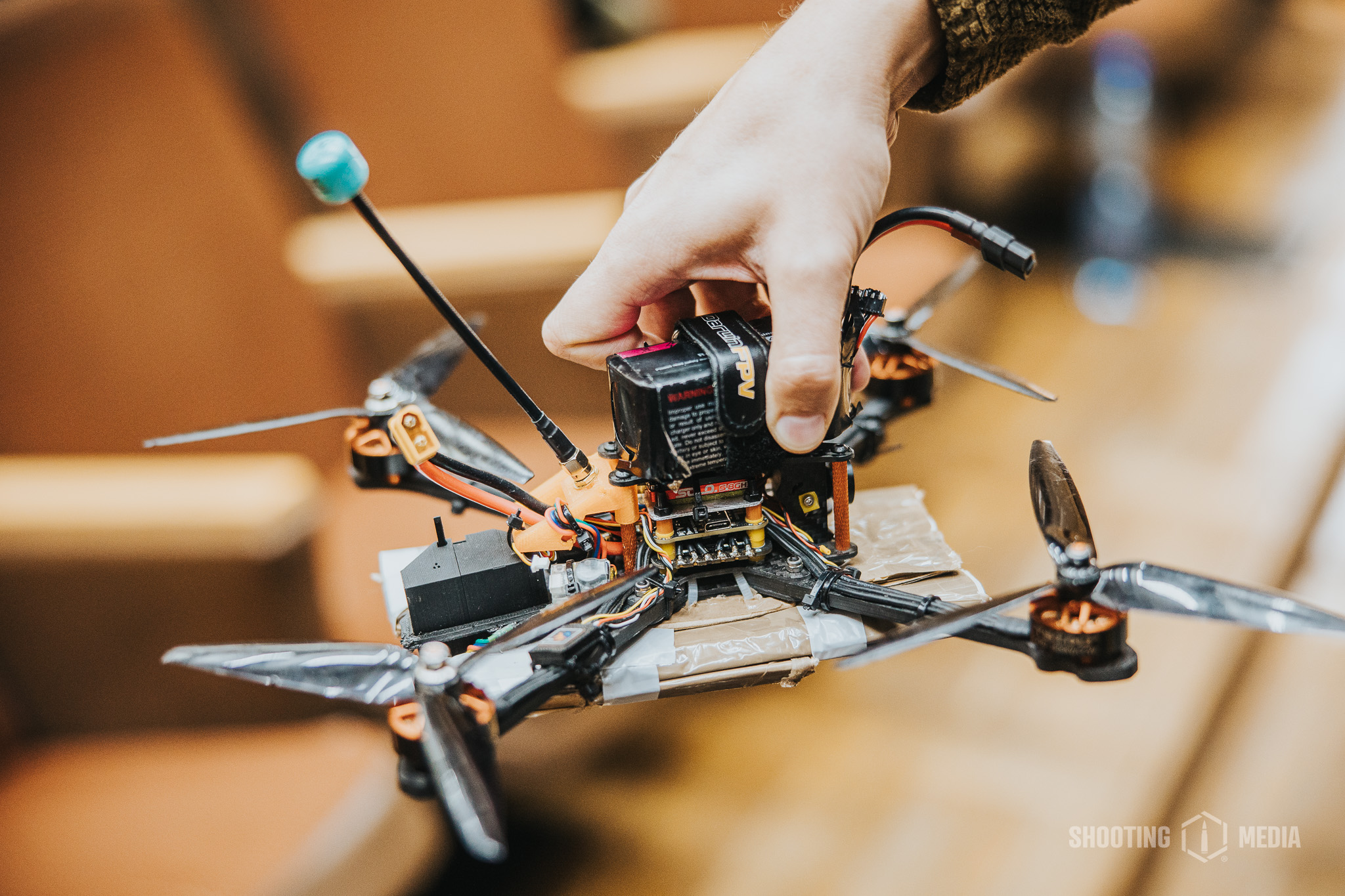
An interesting lecture focused on planning drone operations in the command process. During the hour-long lecture, almost all the challenges faced by officers, who must quickly adapt necessary military procedures to the new element of the modern battlefield, drones, were discussed. It is incredibly important to include this factor in the training of soldiers, to sensitize them to this form of threat from the enemy. The lecture ended with the conclusion that there is an answer to everything, but unfortunately, we still do not have one for Russian drones, something that we hope will change soon. Or perhaps it was just meant to motivate the listeners?
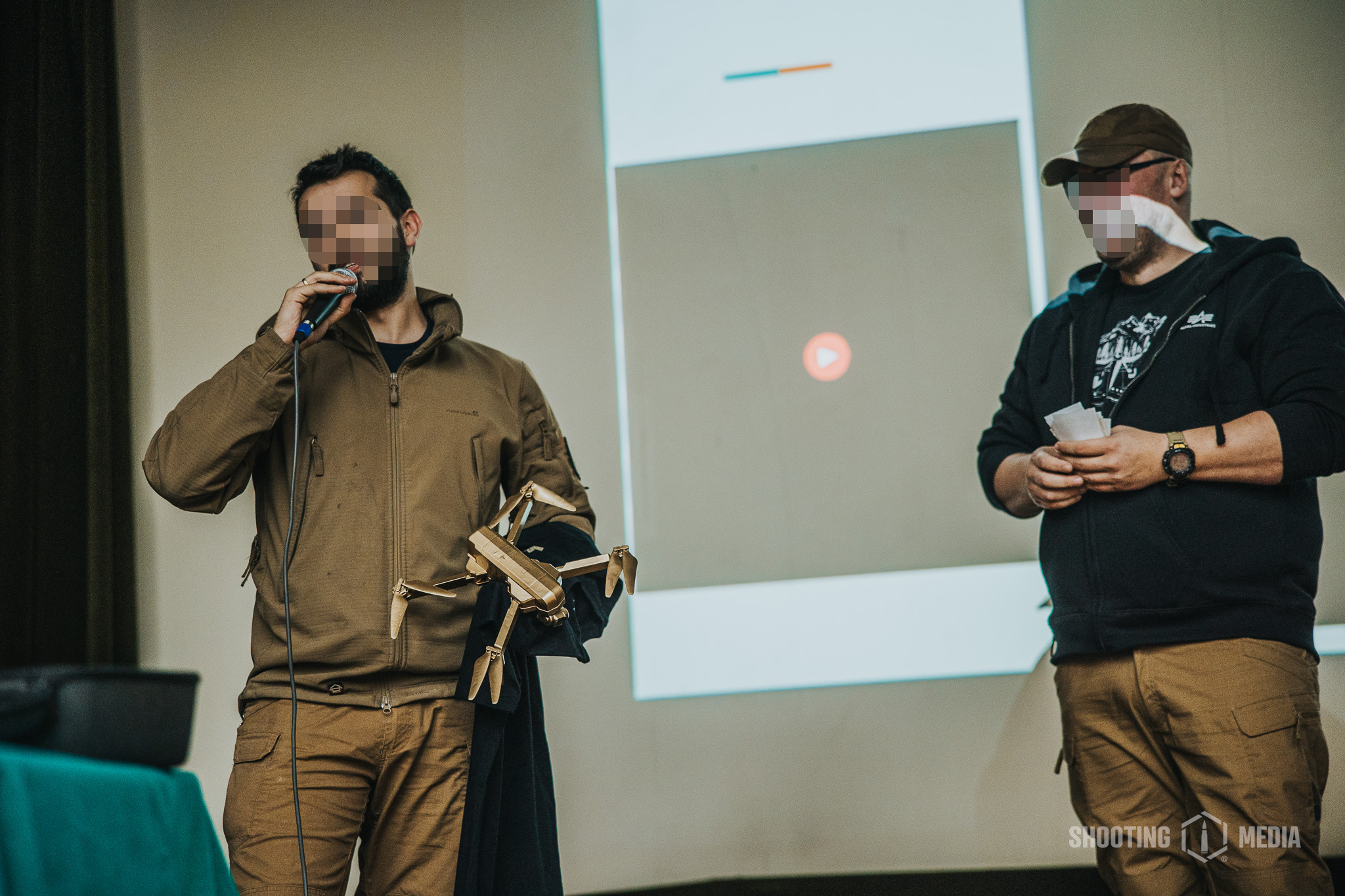
There were also humorous moments — in front of the entire auditorium, the Golden Mavic was awarded to Hatir, one of the Karniewiacy, as a reward for sinking the group's Mavic 3 Thermal during one of the exercises in the only small swamp in the area.
During two teleconferences, Borys Romanko (one of the organizers, hereinafter referred to as Borys) connected with two soldiers from Ukraine who spoke about their work and experiences using drones in the confrontation with the Russian army. Dennis talked about his work with the Flyeye drone and the modifications forced by the realities of war (including a larger battery for extended flight time), as well as the threats they have to deal with. Surveillance and reconnaissance drones are not always targeted by air defense or explosive drones — sometimes a Flyeye returns to base damaged by the propellers of suicidal FPVs. Vadim, on the other hand, talked about long-range drone operations, when to use what type of drone, including fiber-optic-controlled ones. For example, FPV drones are used to hunt jammers — even if they enter a jammed frequency range, they accelerate in the final flight phase and hit the target like a launched missile. Drone traps are becoming the norm — lying in wait in sleep mode, they are activated by a signal from a reconnaissance drone operator, waking up at the last moment when the target is near and has little chance to escape. Fiber-optic-controlled drones are typically used against well-recognized targets. Due to the required capabilities of strike drones, the Ukrainian army is no longer interested in drones having propellers smaller than 10 inches (due to payload, range, and flight time).
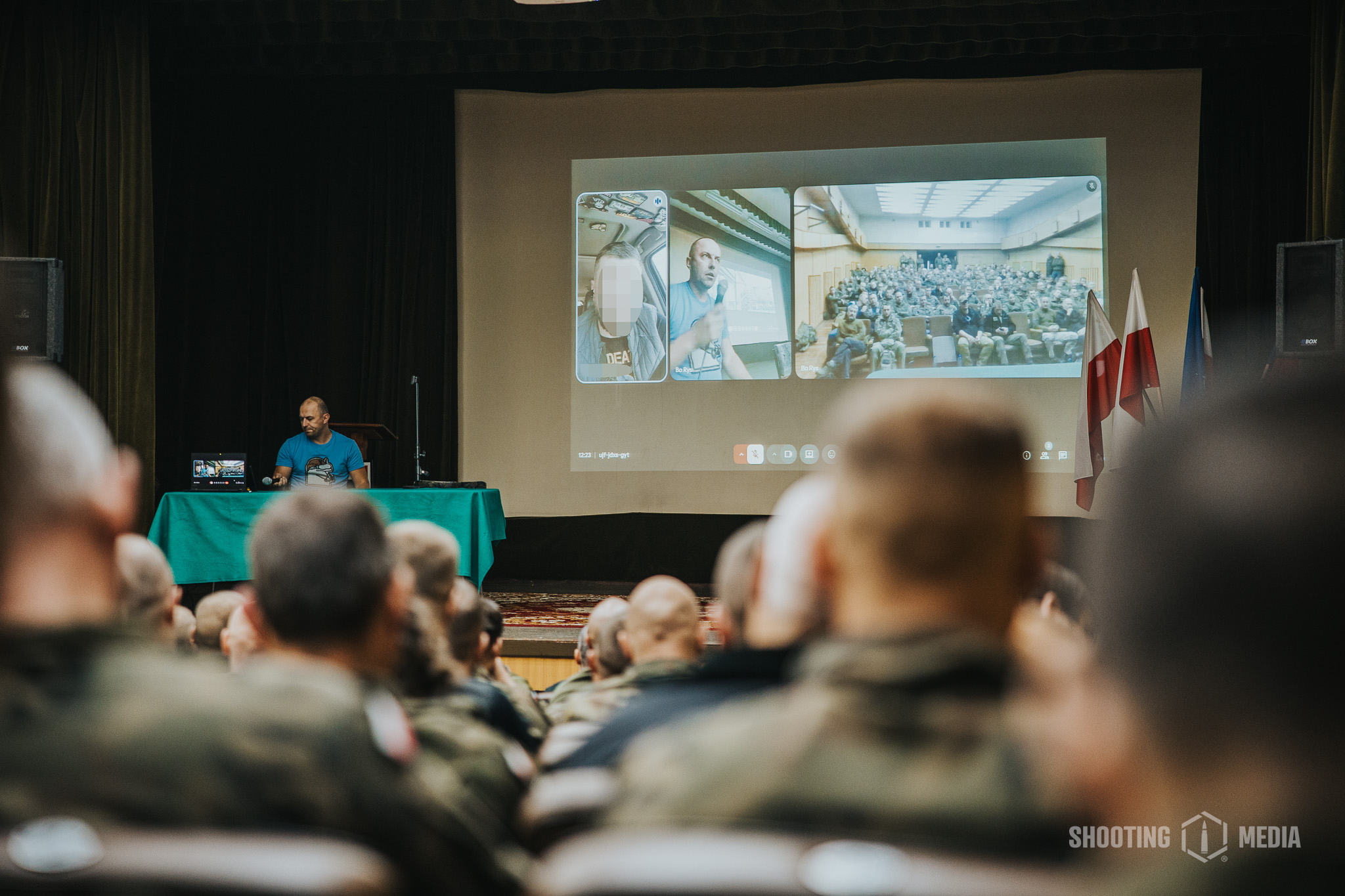
Drone competitions and workshops combined
On the following day of the camp, five task locations were set up in the surrounding areas of the fortress, south of the town of Mońki, spread across about 70 square kilometers of open fields. At each location, the tasks were similar in nature. They included reconnaissance of a designated sector and locating A3-sized boards with specific numbers or letters (sometimes hidden among trees, so a drone with zoom capability was highly recommended), vehicle tracking, bombing a target (balloon or tarp), flying into a target (a hanging net) placed next to a jammer, transporting a bottle filled with 0.5 to 1 kg of sand, streaming simulated artillery strikes with hit locations marked in the TAK app, destroying a helium balloon in flight, taking photos of a target and providing its exact location in the TAK or Milchat app, and even eliminating a vehicle with a crew that could defend itself using ASG replicas before the attack. Targets were located 2 to 3 km from the task point. The competition turned out to be not only a rivalry but also an excellent workshop and test for participants' skills and their equipment. Despite experienced teams, some drones were lost due to overload or loss of connection. This demonstrates how important initiatives like "It spins!" are and how vital drone operator crew training is. Even with experience, complications occurred in comfortable and controlled conditions. What if it had been wartime? Participants included individuals already engaged in drone operations for some time.
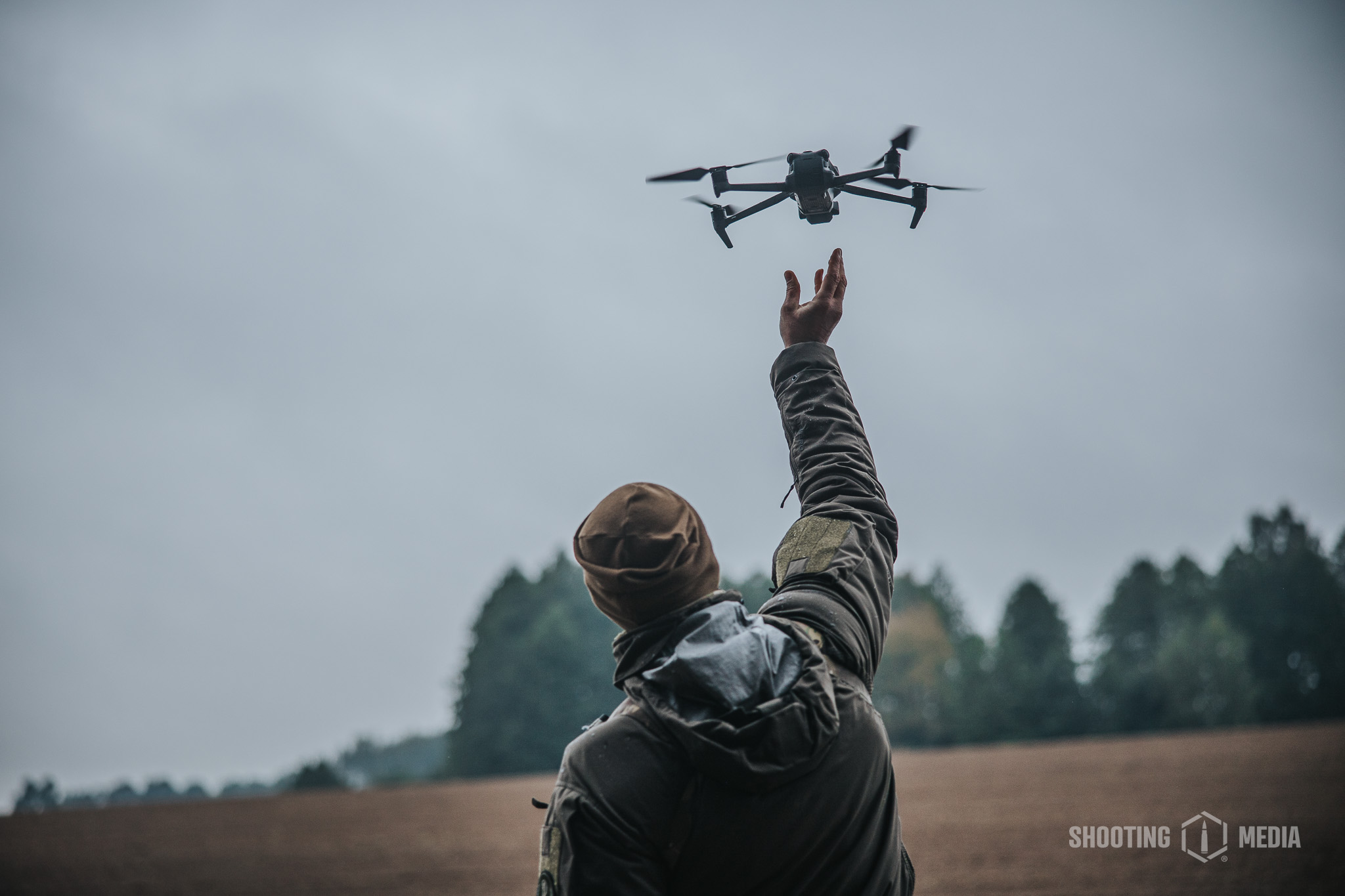
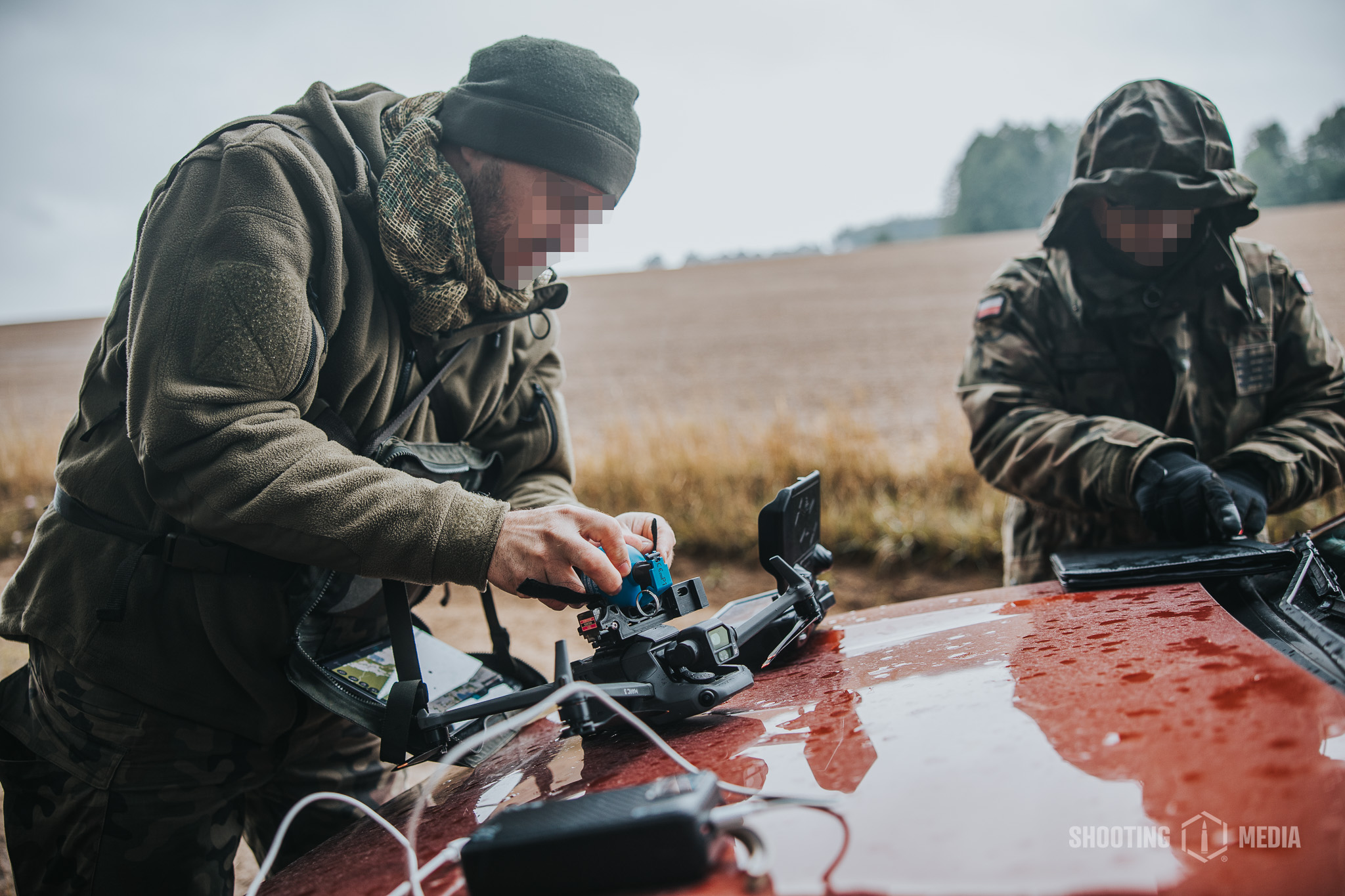
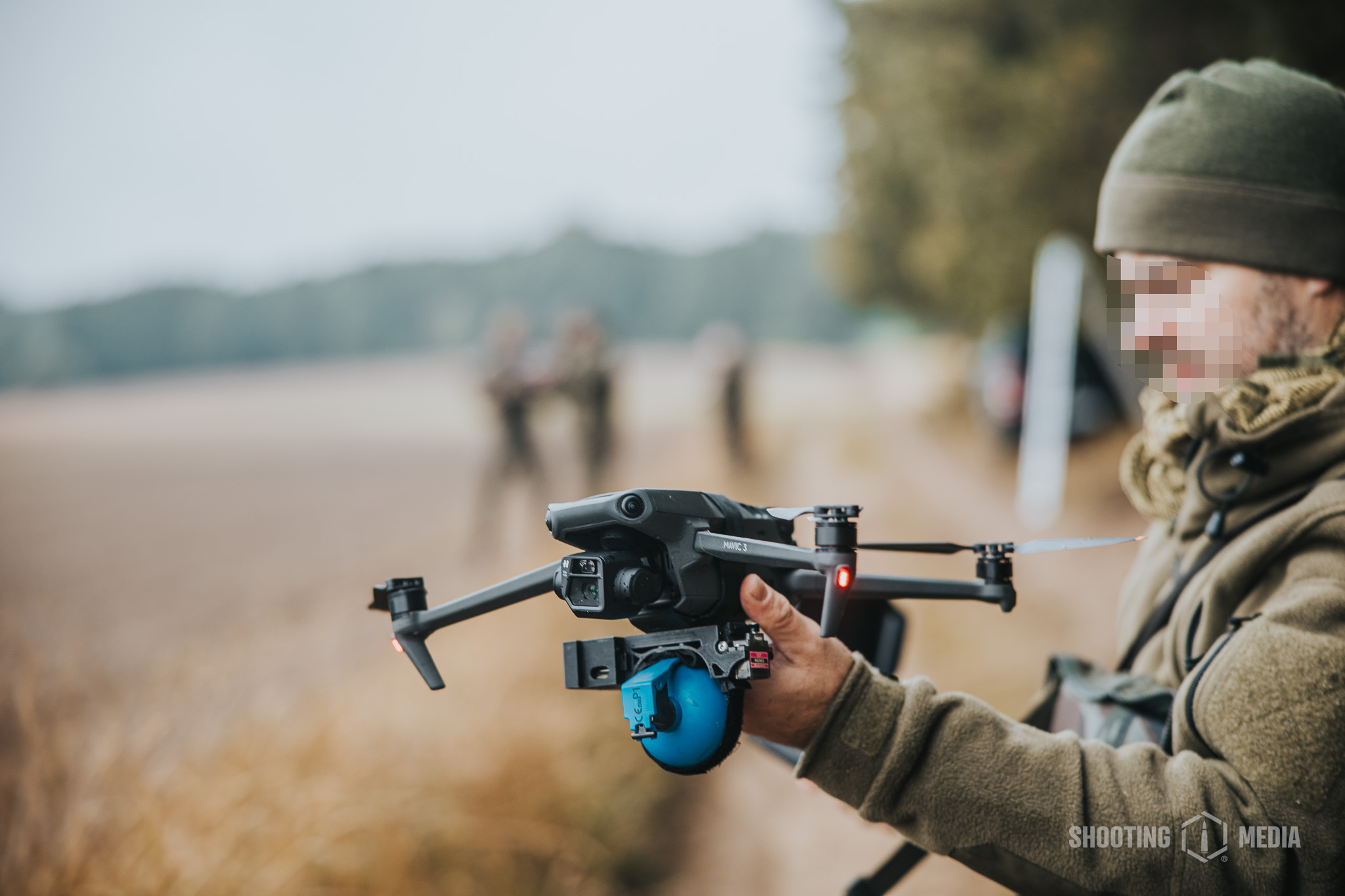
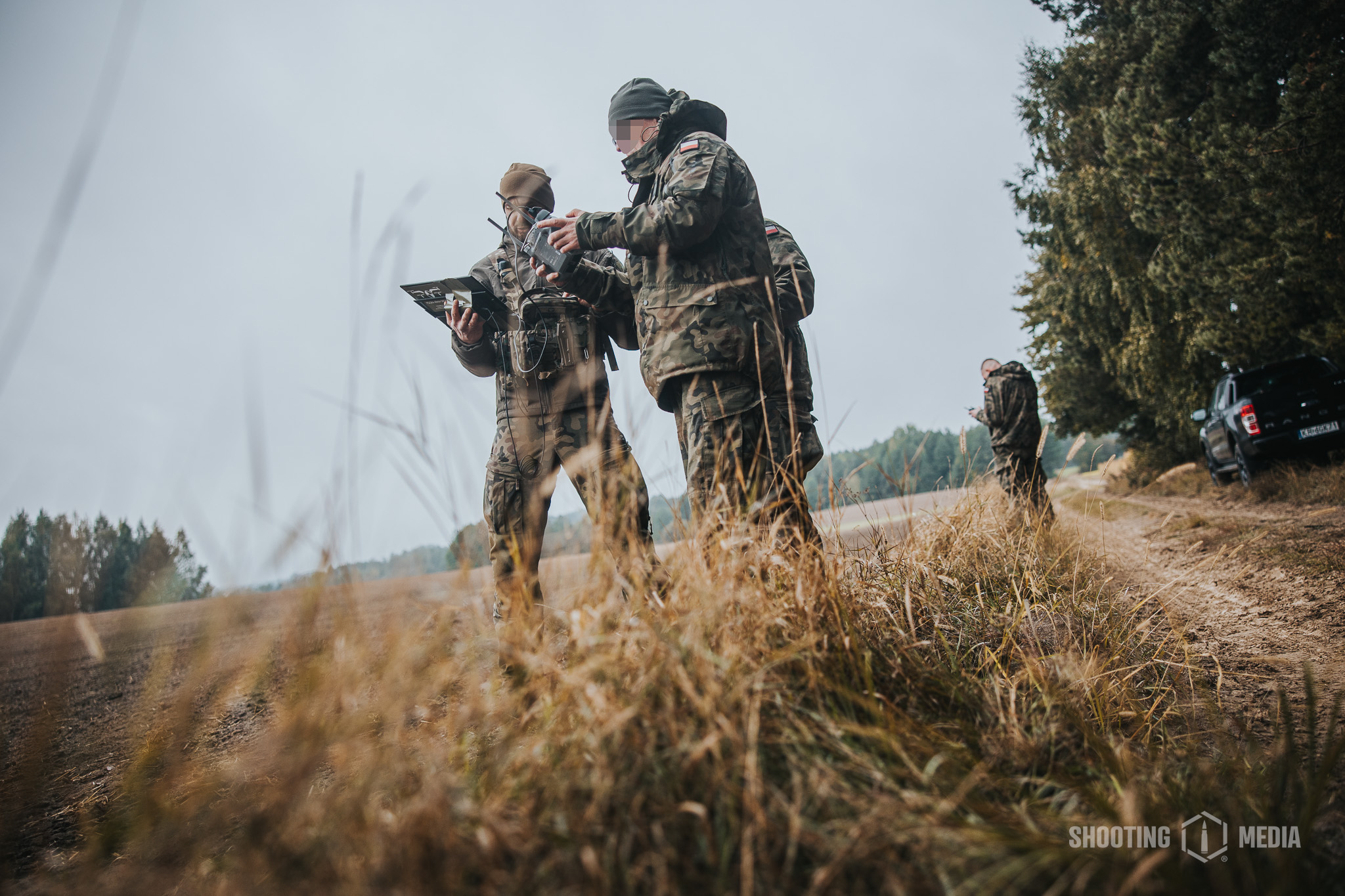
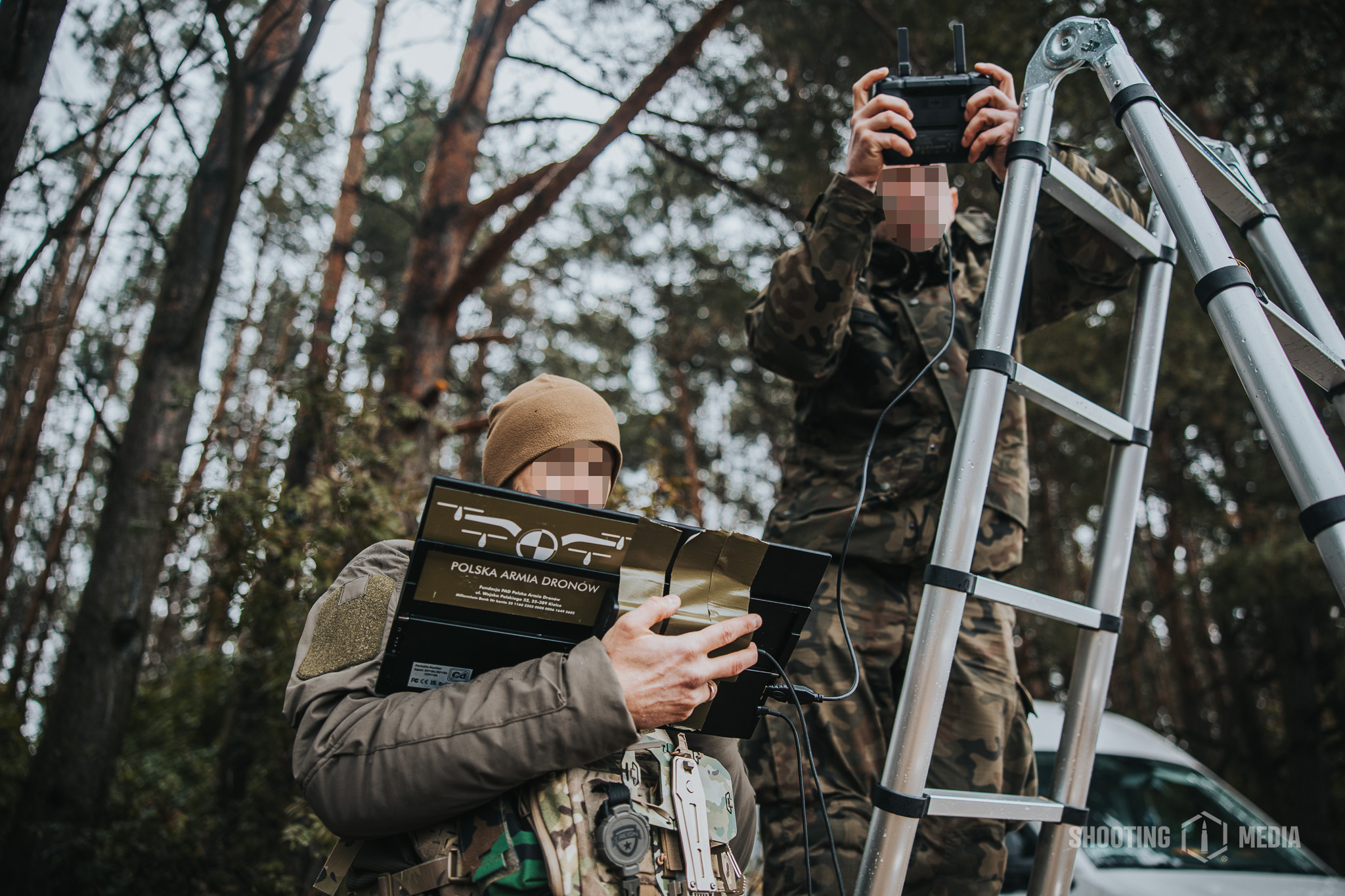
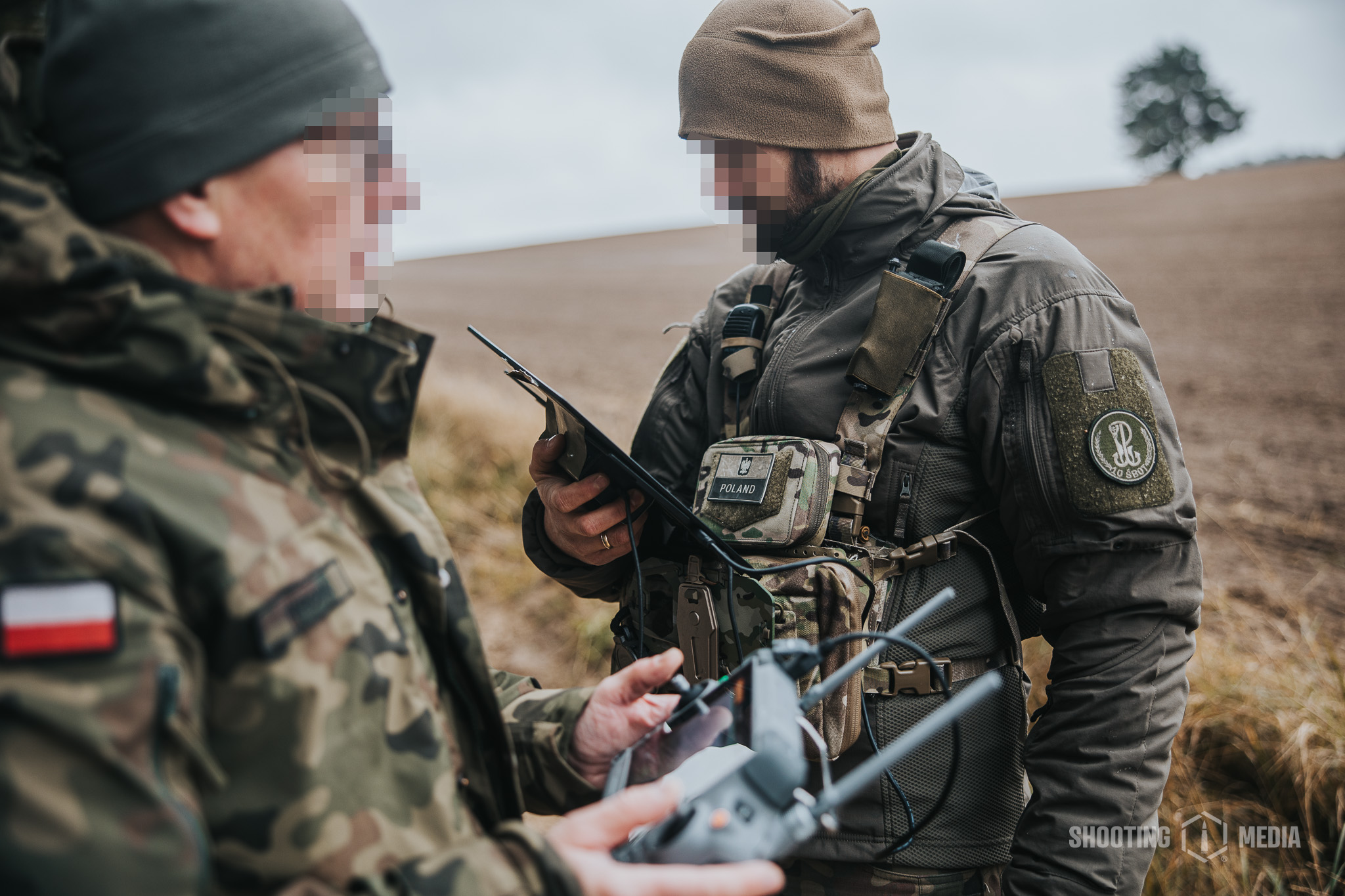
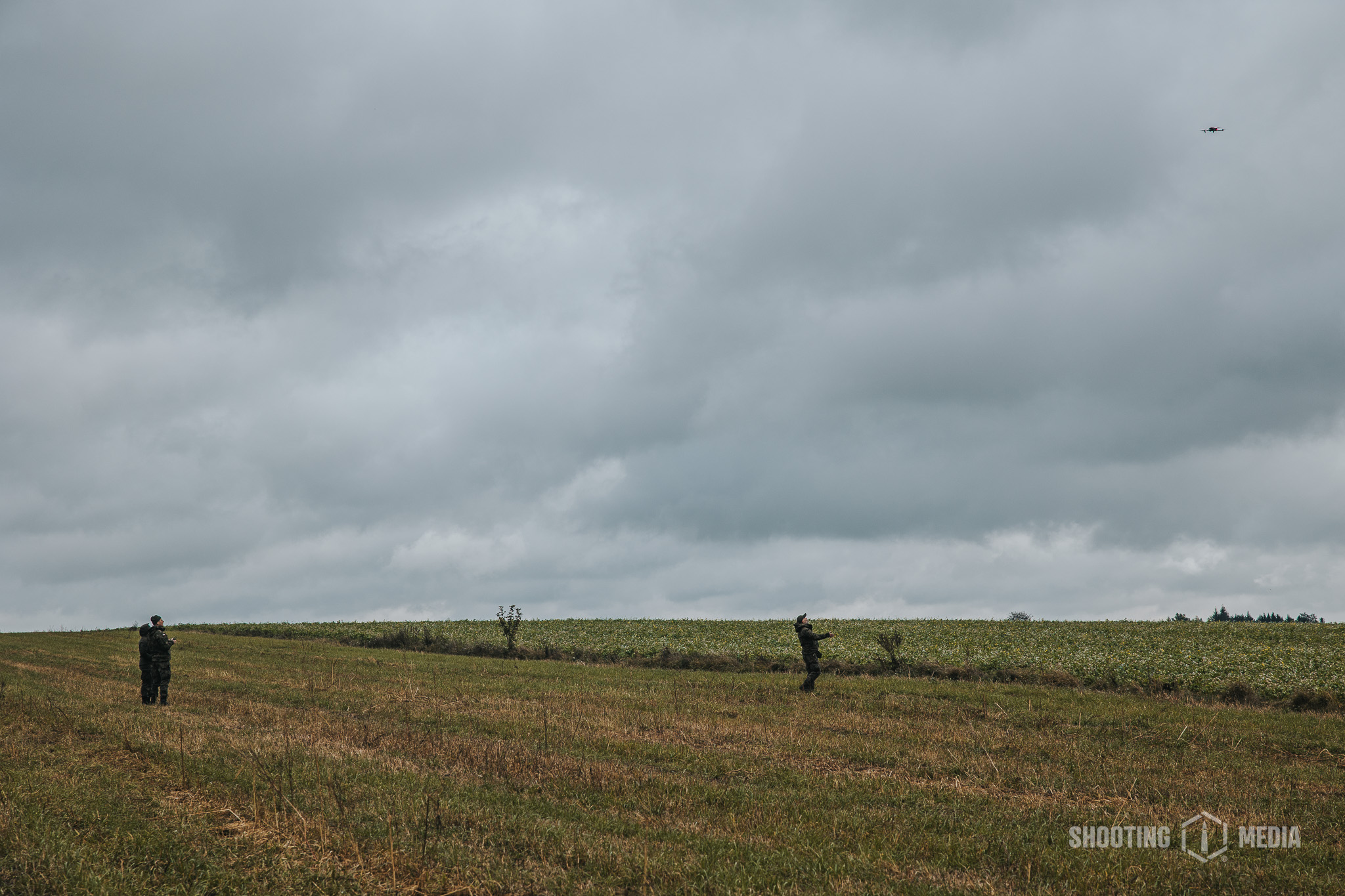
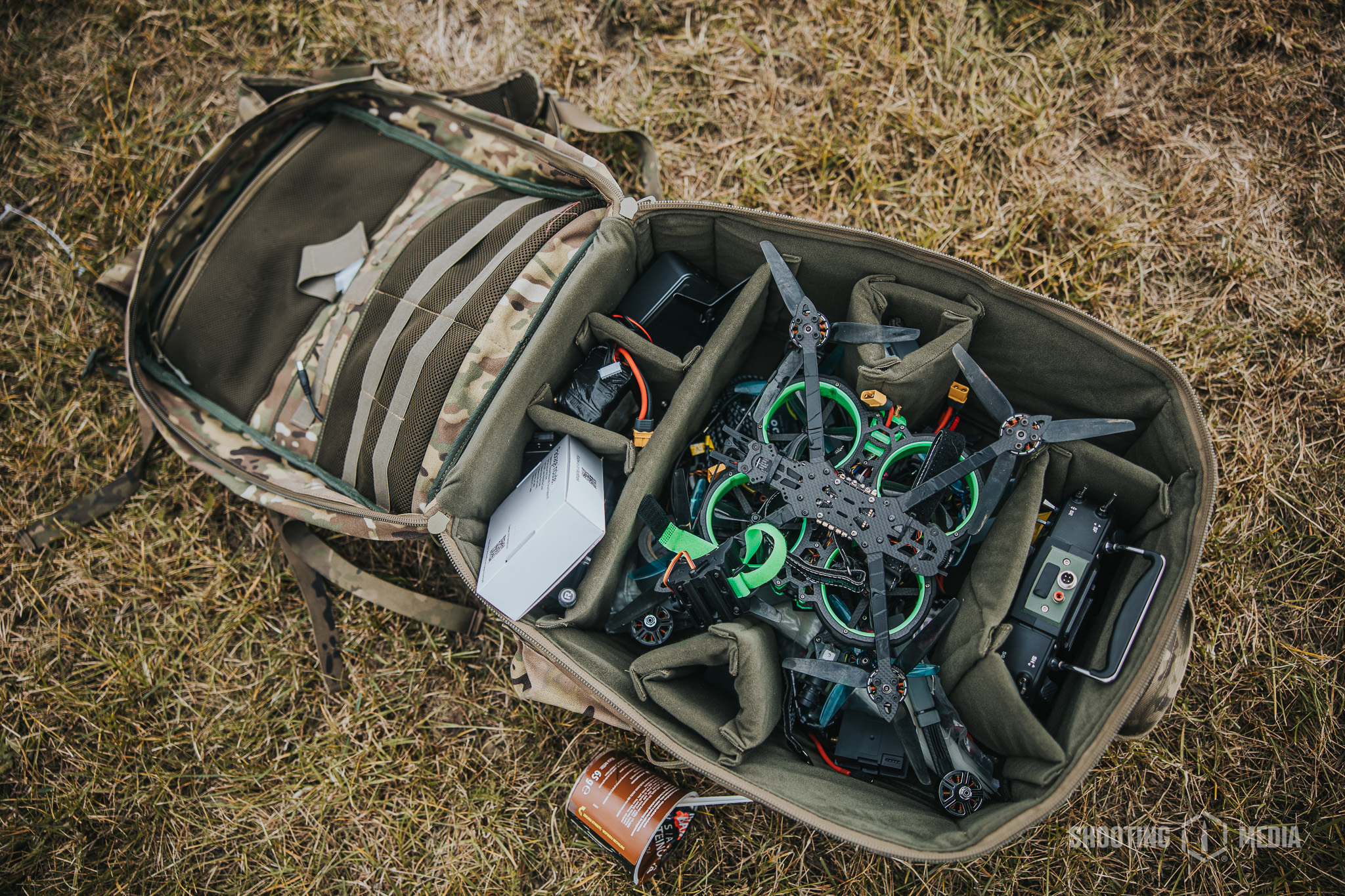
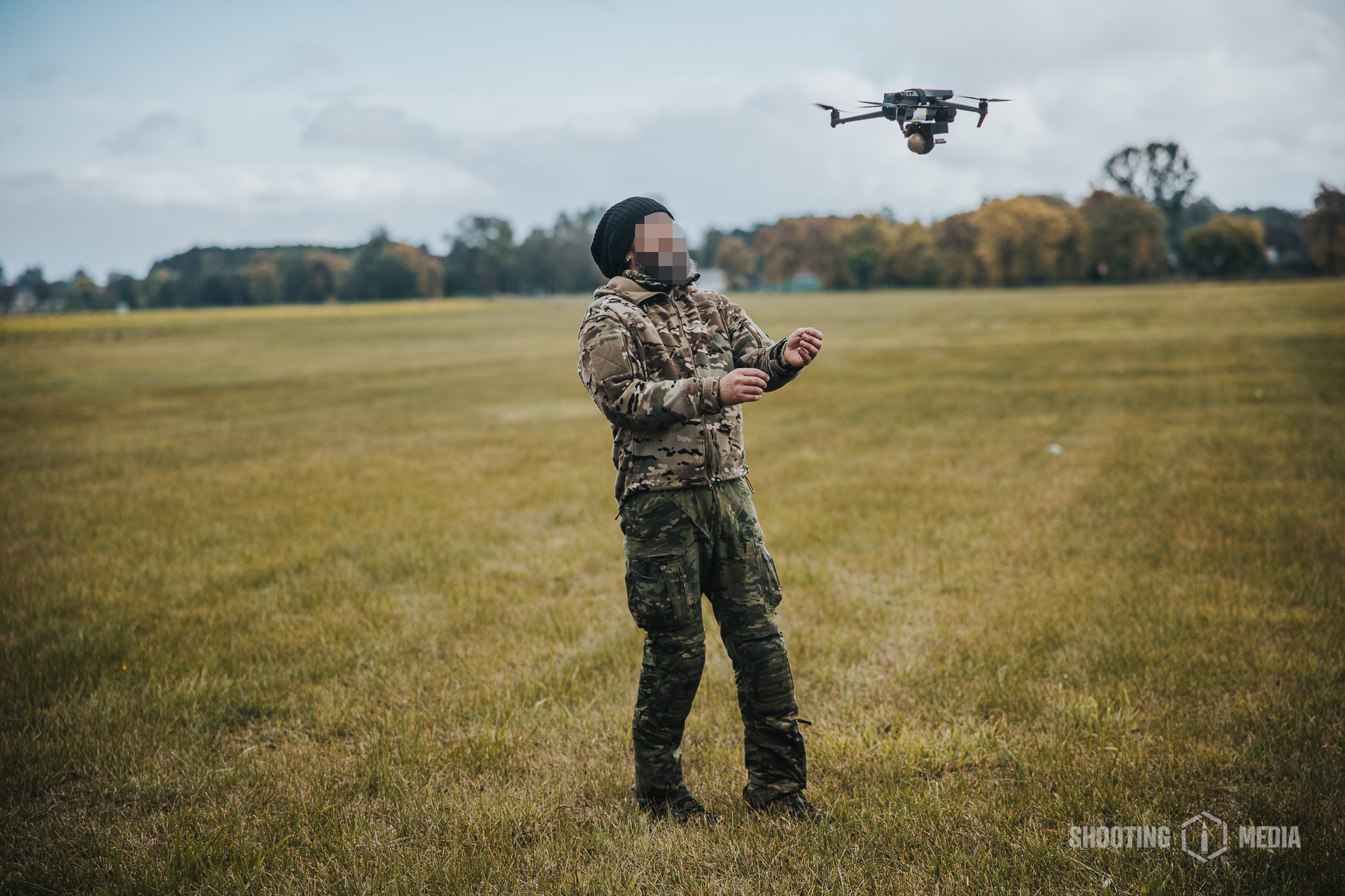
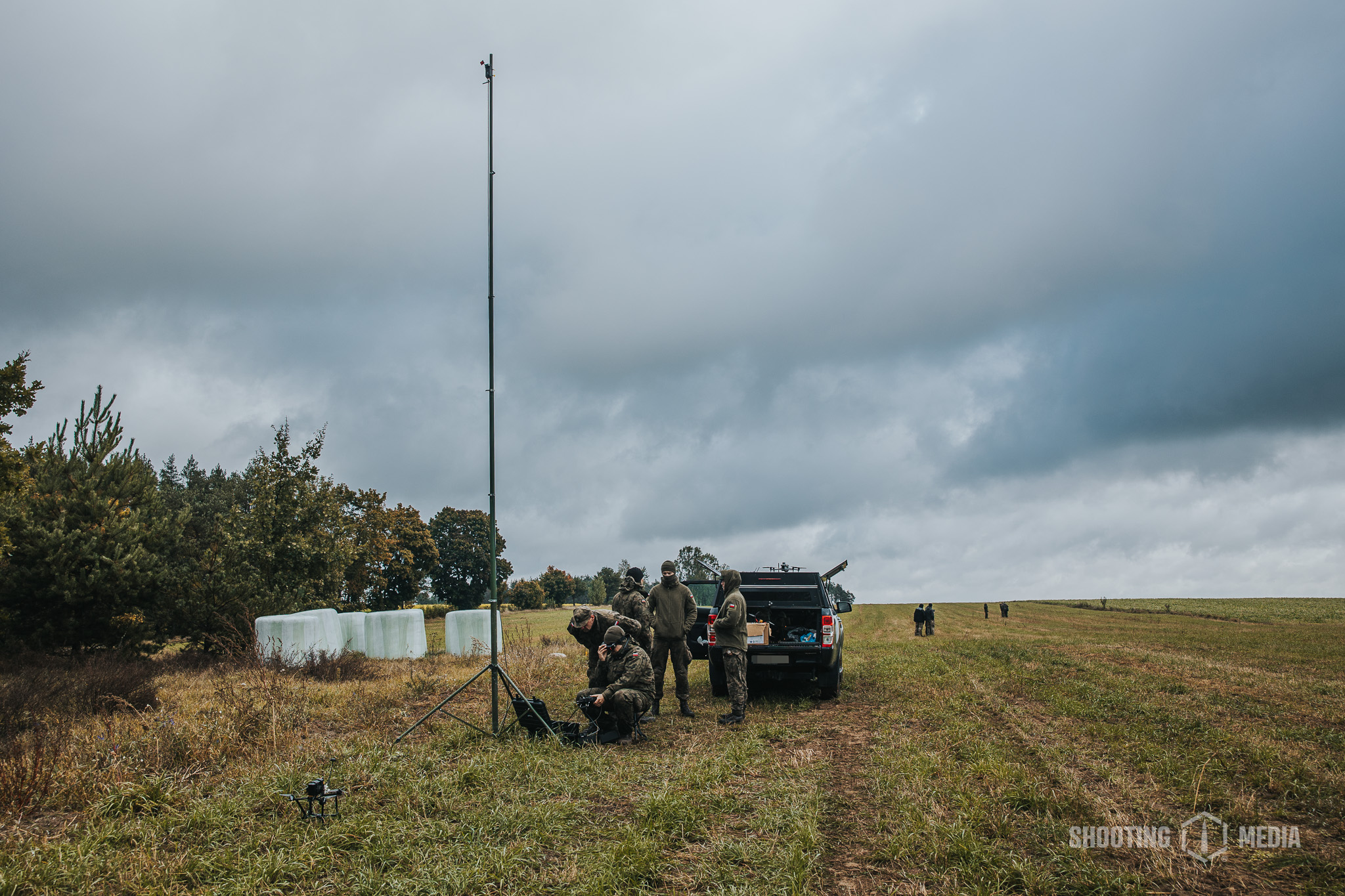
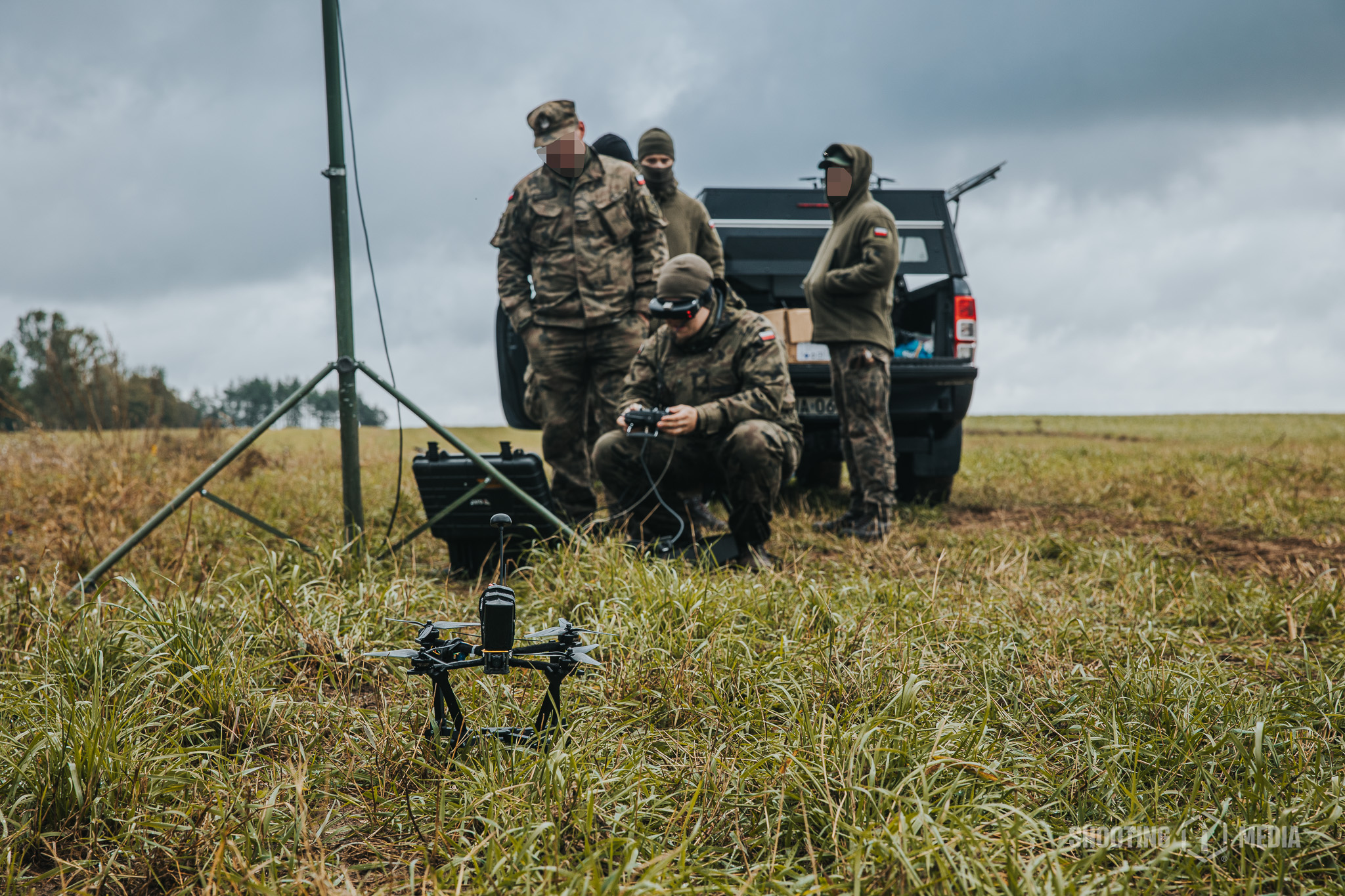
10 teams participated in the competition. Most were military teams, but three were civilian (Karniewiacy, Szkoła Partyzantów, and SZROT). One team had a mixed military-civilian composition (JWDN + Drobiarze).
Key takeaways from the "It spins!" initiative
In the face of the war in Ukraine and the concurrent development of technology and tactics for deploying combat drones, one gets the impression that our armed forces' adaptation in this area is progressing surprisingly sluggishly. In fighting against Russia, the Ukrainian side uses 200,000 drones per month, dropping 150,000 bombs on the enemy with them (based on information obtained during the conference). Such an enormous number requires cheap and effective solutions (including rapid adaptation to changing conflict conditions), impossible for large defense companies to achieve through slowly negotiated contracts. Over these few years drone use has evolved — from employing easily available and relatively inexpensive civilian drones for reconnaissance and artillery fire adjustment, through kamikaze strike drones, reusable drones that drop bombs and grenades, to fiber-optic–controlled drones that are immune to jamming and takeover, and increasingly bold integration of artificial intelligence (AI). The effectiveness of fiber-optic drones, which can have a range of up to 25 km (10 km of cable weighs only 1 kg!), is estimated at around 90% and they strike fear on both sides of the conflict. In Russia, children already learn about drones and their combat use in primary school. Entire farms of 3D printers are being set up (including containerized ones close to the front line), while here officials and celebrities promote bug-out backpacks. Useful for all forms of crises requiring evacuation (I always repeat #alwaysbeready), but when faced with a drone there may be no time to run — and it would be good to know that our state is also prepared for that threat in advance, drawing on the experience of our eastern neighbors. So far, it seems we have a quiet grassroots mobilization among part of the drone community. While the problem is recognized and some actions have been taken by the Ministry of National Defence (MON), as could be heard at the "It spins!" conference, those measures are slow, eaten by bureaucracy, and consequently not very effective. It turns out that soldiers who want to be well prepared often buy drones with their own funds (e.g., a fund within a company), on which they train and prepare them for combat tasks following solutions from Ukraine. As I unofficially learned, even if something has recently been issued to a unit's equipment, it usually gathers dust in the warehouse out of fear of damaging assigned gear during use and the resulting consequences for the service member…
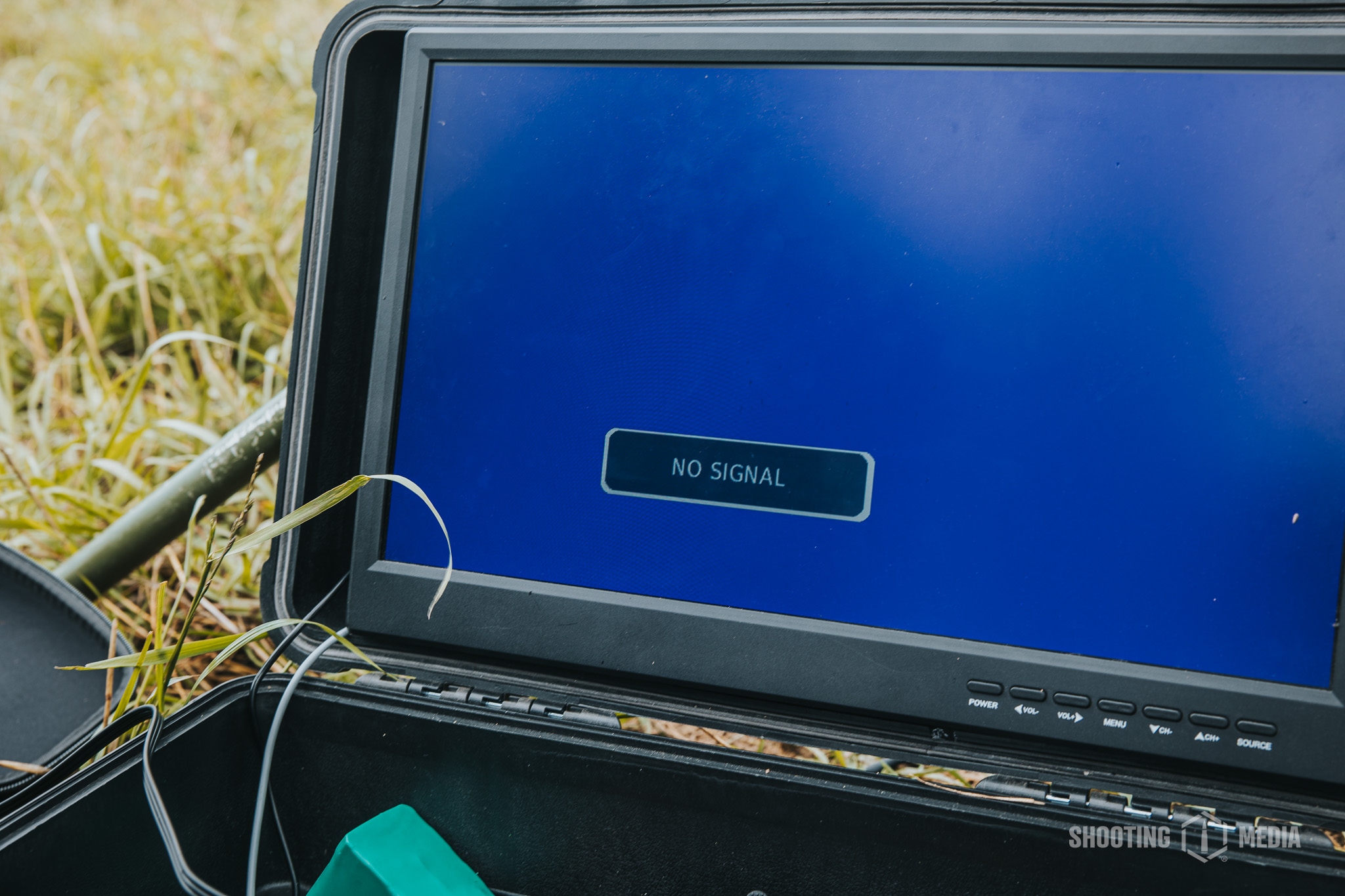
That is all the more reason to welcome initiatives like the "It spins!" conference, organized by Borys Romanko from Klub Strzelających Inaczej (better known here for organizing the Light Infantry competition) and Capt. Michał Lenartowicz from the 4th Company, 1st Podlaska Territorial Defence Brigade. The event provided a priceless opportunity for exchange and for people aware of the threat posed by the widespread use of drones in the war in Ukraine to gain further experience. Civilians, often marginalized by decision-makers (despite attempts at formal contact), had the chance to share their invaluable, individually gained experience (sometimes directly from actions in Ukraine!) and to present solutions effectively used on the front.
It is worth highlighting the sponsors who made the event possible in this form. They were:
- Megadron Store— presence on site and support with a shopping voucher prize worth 2,000 PLN
- NobShop Store — presence on site, simulator, robopies and support with prizes: a 500 PLN shopping voucher and a Radiomaster Pocket controller
- Prodron Store — lecture on antennas and support in the form of vouchers worth 500, 400, 200 and 150 PLN
- RP Arms Store — prizes in the form of 100 PLN shopping vouchers and powerbanks with solar chargers
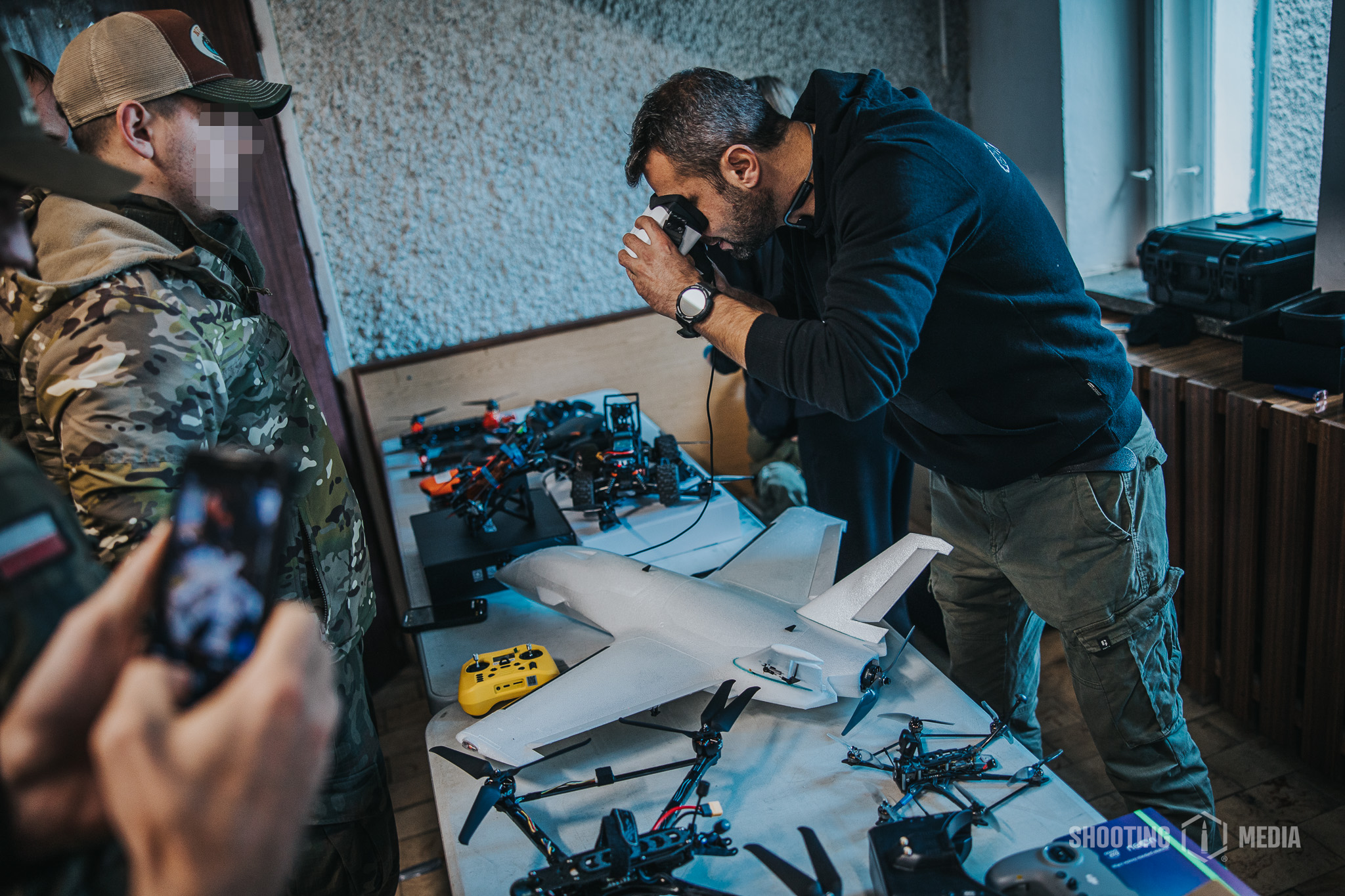
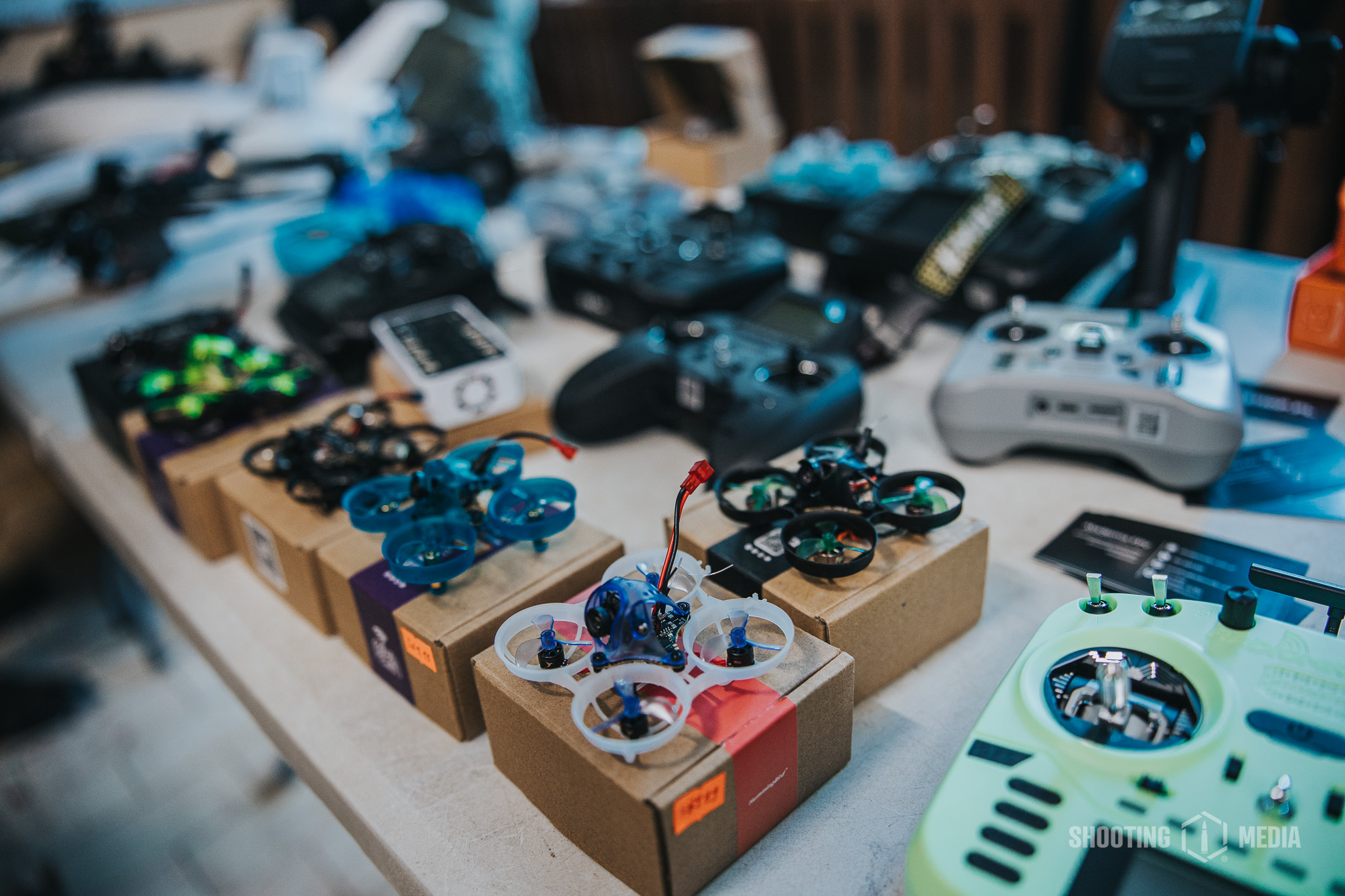
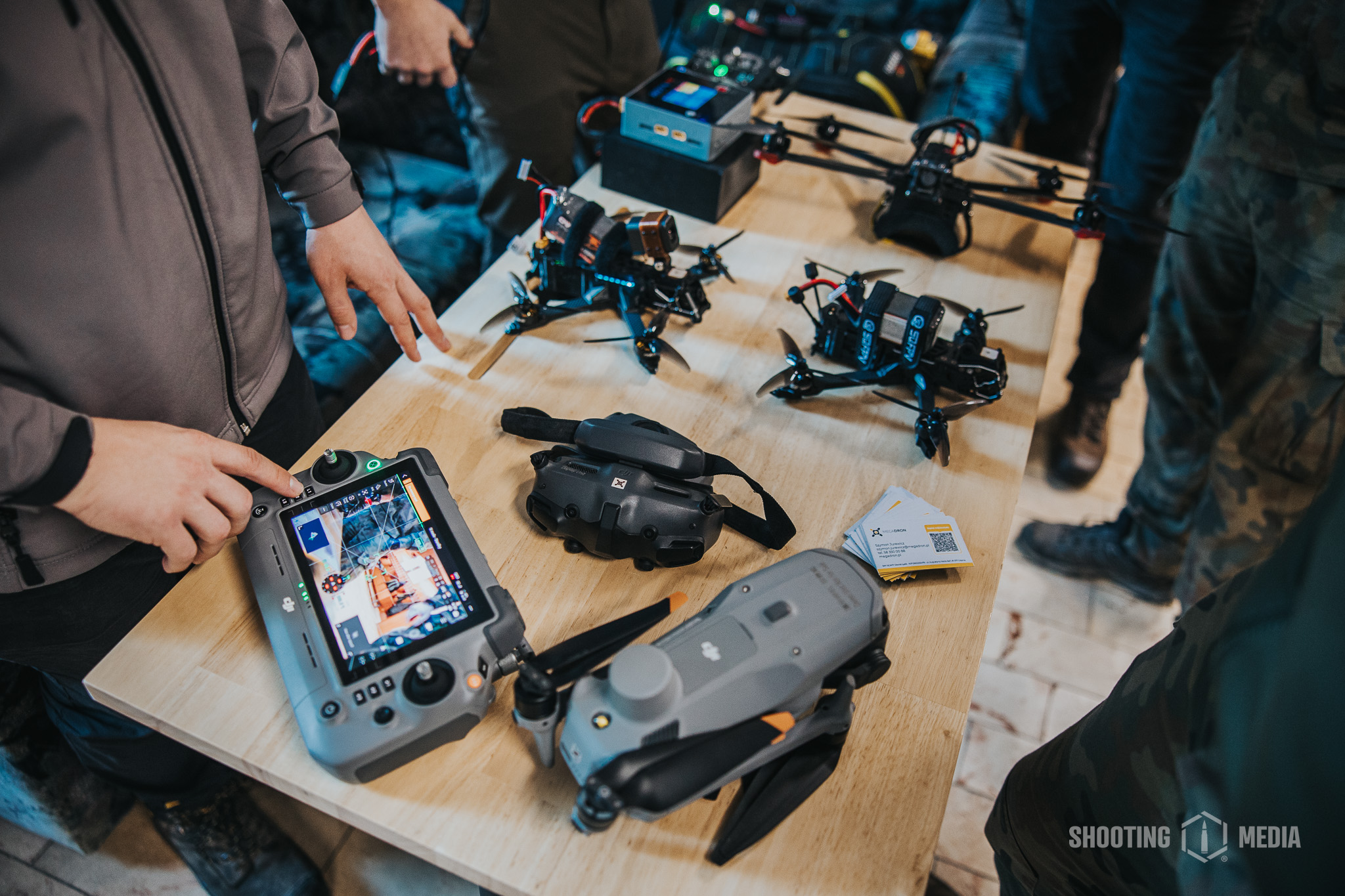
What to buy to enter the "It spins!" competition
Since you made it this far, below are Borys's recommendations for those interested in the ideal equipment set for this type of competition. It's not cheap, but that's what a passionate team is for:
- reconnaissance drone with minimum x9 zoom, preferably x28 (DJI Air 3, Mavic 3, Mavic 3 Thermal) — must have Drone-Hack installed,
- around 11 batteries for the reconnaissance drone,
- antenna kit for the reconnaissance drone + 10–20 m cables,
- YX charger for charging reconnaissance drone batteries,
- 5–7 inch drone with a digital system DJI O3/O4, Walksnail, OpenIPC etc. and a detonator for shooting down aerial targets,
- 2–4 Li-po or Li-ion batteries for the target-shooting drone with high current output (150A etc.),
- digital goggles DJI, Walksnail etc.
- 10 inch drone with an analog daytime camera with a dropping system capable of carrying a 1.5L PET bottle,
- 10 inch drone with an analog daytime camera with a detonator,
- 8–11 6S 8000mAh Li-ion batteries for the 10 inch drone,
- 4-bay charger for Li-po, Li-ion batteries,
- antenna kit for the analog drone with 20–25 m cable,
- Radiomaster TX16/TX15/Pocket transmitter,
- analog goggles Skyzone SKY04O or 04X,
- 2–4 Pyrosoft grenades with shot,
- firework charges with igniters and shot for the detonator,
- EcoFlow or another power bank with about 2000Wh capacity,
- metal antenna mast 10 m tall when extended, 1.6 m when folded,
- stakes for the mast,
- camouflage netting for a vehicle.
Together with Borys, we encourage developing activity and interest in this direction and taking part in future editions of Kręci się!
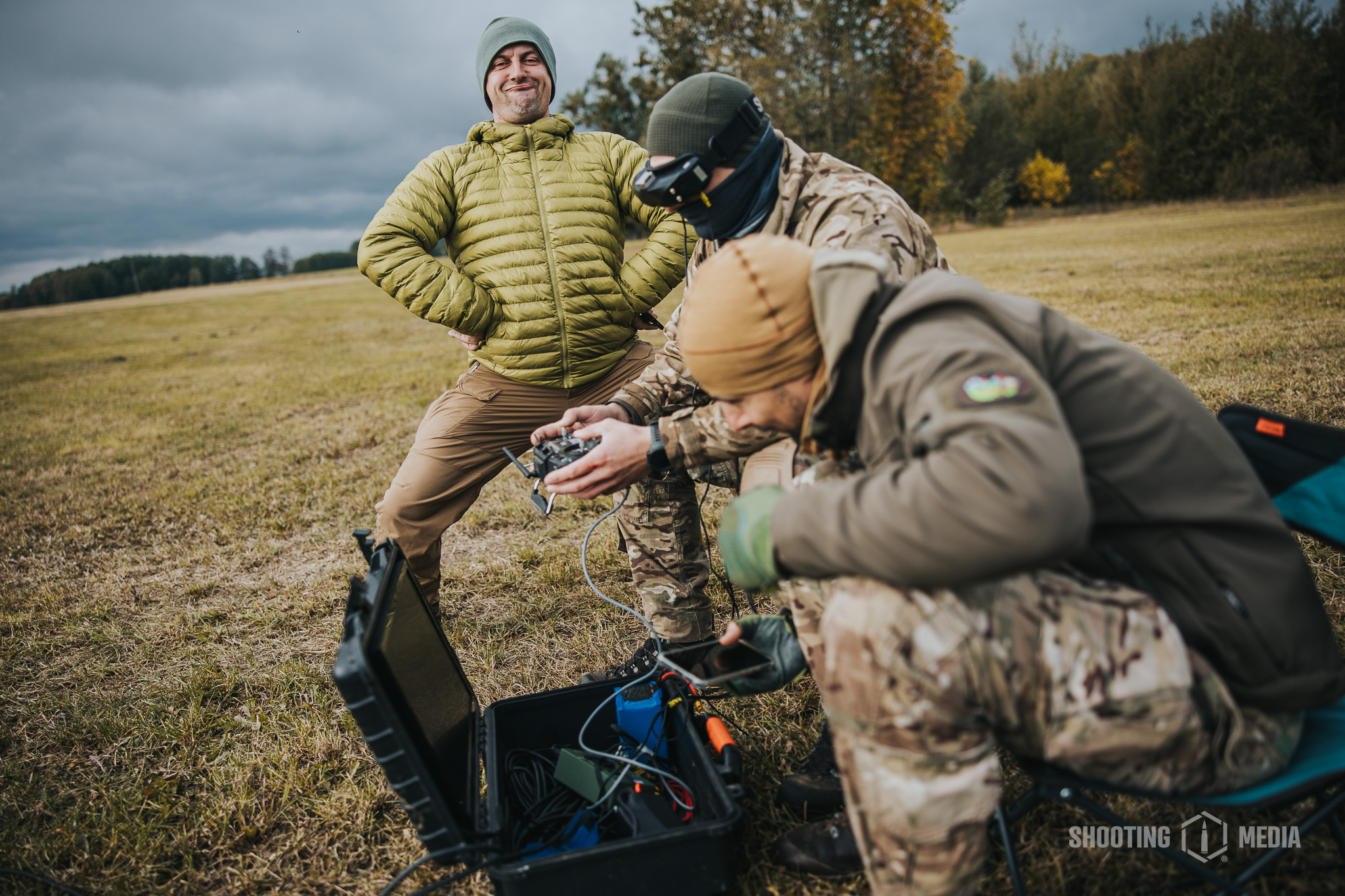
Borys in his pose motivating others to take action.
The end, ende, finito.

